- Search Please fill out this field.
- Manage Your Subscription
- Give a Gift Subscription
- Newsletters
- Sweepstakes
- Attractions

Best Civil War Sites
No matter how compelling a Ken Burns documentary can be, nothing beats standing on a Civil War battlefield for bearing witness to those four bloody years. “Antietam’s the most evocative and scary battle site I’ve ever been to, and the only place I’ve ever felt a ‘presence,’” says John Barton, a Virginia photographer and Civil War junkie. “Much is the same as that day: there are still surrounding farms and unspoiled views of the Blue Ridge, so seeing the famous landmarks—the Cornfield, the Sunken Road—has a devastating power.” Millions of Americans seek out that kind of visceral connection at Civil War sites annually, and the next few years are the time to visit as special events commemorate the conflict’s 150th anniversary. The National Park Service set up a dedicated website and launched a Twitter feed, @CivilWarReportr , that tracks the war’s development (“June 27, 1862: Our line gives way! We flee for the bridges to our rear as the cavalry attempts to stop the advance and save our artillery”; “July 7: A found newspaper reports the Federals have levied a tax on income above $600. Someone must pay for this war”). For play-by-play commentary on the battlefield, you can hire an NPS-licensed guide at Gettysburg or Vicksburg to ride along for two-hour car tours. Parks also typically offer self-guided tours and orientation films and, on summer weekends, invite reenactors to stage skirmishes, decked out with muskets and wool uniforms. Check park websites to schedule your visit to coincide with the reenactments (or not—a few lonesome hours spent walking the battlefields can be at least as instructive). The savagery leading up to the war demands revisiting, too: the Slave Trail in Richmond, VA, goes past slave markets, burial grounds, and the Devil’s Half-Acre, a jail for “uncooperative” slaves (operated by a man married to a free African American wife!). In Harpers Ferry, WV, the righteous anger of those who opposed slavery is palpable at John Brown’s Fort, where a band of abolitionists held federal troops at bay. You don’t need to be a history buff to get caught up by these vivid stories. So whether you’re planning a road trip dedicated to the Civil War, or just detouring on the way elsewhere, be warned: you may be in for a lifelong obsession.
Gettysburg, PA
Don’t let those Abe Lincoln bobbleheads or other gift shop kitsch distract you from the meaning of those three historic days in July 1863. Focus on the battle, the turning point of a war that had up until then been the Confederates’ to win. After a quick orientation at the Gettysburg National Military Park Museum and Visitor Center, set out with an NPS-licensed battlefield guide for a two-hour drive around the park (book in advance, $65). Such a historian will make vivid sense of all the advances and retreats, the personalities, and the mayhem. The park frequently hosts “living history” weekends, when volunteers, in full costume, re-create skirmishes—check the NPS site for the current calendar .
Don’t Miss: The 250-year-old Fairfield Inn , eight miles to the west of the battlefield, re-creates a three-course meal eaten here by Robert E. Lee during a pause in the Confederate retreat from Gettysburg.
Washington, D.C.
You won’t find battlefields (unless Congress is in session), but Washington’s vital role in the Civil War—from the initial rupture of the Union to President Lincoln’s assassination just five days after the surrender at Appomattox—still looms large. First stop: the Lincoln Memorial, engraved with the texts of the Gettysburg Address and the 16th president’s second inaugural speech. More than a mausoleum for Lincoln’s ideals, the memorial continues to serve as a site for civil rights rallies. Ford’s Theatre and Petersen House, sites of Lincoln’s assassination and death, retain a more funereal hush. A less-visited but emotionally charged monument honors the United States Colored Troops and stands across the street from the African American Civil War Museum , which chronicles the war from the perspective of the African American soldiers, spies, nurses, and families.
Don’t Miss: Lincoln’s Cottage at Soldiers’ Home , where Lincoln and his family retreated each June through November. Though he commuted in to the Oval Office daily—past encamped Union troops, field hospitals, and cemeteries—Lincoln felt most at home here, four miles from the White House.
Antietam, MD
“The slain lay in rows precisely as they had stood in their ranks a few moments before. It was never my fortune to witness a more bloody, dismal battlefield,” wrote Major General Joseph Hooker. In just 12 hours, 23,000 soldiers were killed, wounded or missing—making that September day in 1862 the bloodiest in U.S. history. Devastating casualties and the nighttime retreat of Lee’s Army of Northern Virginia back across the Potomac spurred Lincoln to write the initial Emancipation Proclamation. Pick up a map for a self-guided driving tour of the battlefield, and be sure to climb the observation tower for an overview of the 8.5–mile site. Guides are available (and recommended) for walking tours that trace individual skirmishes.
Don’t Miss: Pry House, a medical museum on the park grounds, merits a visit for its chilling look at battlefield medicine (when supplies ran low, field surgeons bound wounds with corn husks). Clara Barton was here!
Harpers Ferry, WV
In 1859, two years before the war, John Brown, the righteous, Bible-thumping, angry, and awesome abolitionist, raided the federal arsenal in Harpers Ferry , attempting to rouse a slave rebellion and the conscience of the nation. He failed to incite revolt, but arguably hastened the path to war. Harpers Ferry changed hands eight times, a sought-after prize for its strategic position at the convergence of the Potomac and the Shenandoah rivers (providing passage from the east to the Shenandoah Valley). John Brown’s Fort, which was a firehouse occupied by Brown’s raiders, was the scene of several skirmishes, including a three-pronged siege by Stonewall Jackson that captured more than 12,000 Union soldiers garrisoned here—immediately preceding the Battle of Antietam, up the road in Sharpsburg.
Don’t Miss: The extraordinary natural beauty. Hike the two-mile Cliff Trail loop from the Visitor’s Center up past Jefferson Rock. In warm weather, float downstream in an inner tube for a cool perspective.
Richmond, VA
Richmond’s rich and accessible Civil War history surpasses that of any other city. While the southern white history of the Civil War has always been well preserved in the heroic statues along Monument Avenue and in institutions like the Museum and White House of the Confederacy (moc.org), the city has recently taken pains to better document the African American experience, most significantly with the Slave Trail . The walking tour includes the sites of slave markets, the notorious Lumpkin’s Slave Jail (called the Devil’s Half-Acre for its brutal treatment of inmates), the still-active farmers’ market at Shockoe Bottom, and streets where a visiting Lincoln was met by hundreds of cheering freed slaves. Stop at the American Civil War Center in the former Tredegar Iron Works , which clad Confederate ships and forged artillery. A nearby pedestrian bridge crosses the James River to eerie Belle Isle, site of a prison where captured Union soldiers were held.
Don’t Miss: Hollywood Cemetery is the final resting place of American presidents (James Monroe and John Tyler) and Civil War luminaries like Jefferson Davis, George Pickett, and J.E.B. Stuart. A rough-hewn pyramid marks the graves of unknown Confederate soldiers.
Shiloh National Military Park , 120 miles from Memphis, seems a million miles from anywhere, just as it did back in 1862. The battlefield is now a quiet rolling landscape beside the Tennessee River, but landmarks named during those clashes (Hornet’s Nest, the Bloody Pond) evoke the soldiers’ experience—so profound that much of the acreage was donated by veteran groups, both northern and southern, who bought land and erected monuments to fallen comrades. After a 12-mile car tour, trace the path of the Confederates’ retreat to Corinth Crossroads , 22 miles south of Shiloh in Mississippi. The railroad crossroads was the junction of north/south railroads and east/west railroads, so whichever army held the town controlled troop and artillery movement along the rails. The desire for control drove both sides to the battle of Shiloh.
Don’t Miss: Hagy’s Catfish Hotel , a glorified fish shack near the Shiloh park, is worth a stop for a meal overlooking the river.
Mobile Bay, AL
A Confederate admiral hailing from the North faces a navy led by a Union admiral born in Tennessee and raised in New Orleans. This unlikely scenario played out in Mobile Bay, the only Gulf Coast port still controlled by the Confederates, which provided southern troops with supplies, via railroad from Mobile. Admiral Farragut used four new ironclad ships to lead his attack through the straits between fortresses on Dauphin Island and Mobile Point—and followed with 14 wooden ships, lashed in pairs so that if one got hit, it would not be lost. You can stand at the preserved ruins of Fort Morgan for views of the bay and take the 40-minute scenic ferry trip across to tour the Dauphin Island’s Fort Gaines . Another Confederate defense, the fort has self-guided tours, a blacksmith demonstration several days a week (in season), and a rather astounding 10-man latrine.
Don’t Miss: Dauphin Island Sea Lab/Estuarium , a marine research lab, seemingly offers tours as an afterthought, but the information about the ecology of these barrier islands is fascinating and worth the short hop from Fort Gaines.
Fredericksburg, VA
The beautiful farmland around Fredericksburg seemed especially attractive during the war because of the city’s position midway between D.C. and the Confederate capital of Richmond. Horrible and decisive battles were fought in the area. Begin at the Visitor Center at the Fredericksburg and Spotsylvania National Military Park to get oriented with the several separate units of the park complex. Walk the trail at Marye’s Heights, where Confederate infantry, shielded by a four-foot-high stone wall, mowed down wave upon wave of assailants, leaving 9,000 Union dead before General Burnside gave the order to retreat. Salem Church, surrounded by decidedly nonhistorical development, is a satellite of the national park. The Wilderness portion, where the armies met in the overgrown and gnarled woods, is now mostly manicured, but peaceful paths are punctuated by historic markers and still surrounded by dense thickets.
Don’t Miss: A macabre side trip to Ellwood Farm, where Stonewall Jackson’s amputated arm is buried in its own marked grave (open weekends, 11 a.m.–5 p.m.; on weekdays, pick up a pass at the Chancellorsville Visitor Center). Jackson was famously shot by his own troops when returning from a reconnaissance trip at dusk. His wounded arm was amputated, and Jackson lived for another eight days before succumbing to pneumonia.
Vicksburg, MS
Vicksburg was not just the location of individual battles but also endured a painful 47-day siege. Pemberton’s Headquarters (1018 Crawford St.) and the Old Courthouse Museum reflect the town’s wealthy antebellum period as well as wartime life. The low-key museum is a treasure trove of artifacts, costumes, and fascinating historic photography (formally attired citizens pose outside cave-bunkers carved into hills during the siege). The military park can be walked or hiked, but the preferred method is driving the 20-mile loop with frequent stops. The on-site USS Cairo Museum is named for a federal ironclad ship that sank during the siege and was preserved in the Mississippi silt and mud until being dredged up and restored a hundred years later. A visit makes it clear why these monitor ships, with angled defenses to deflect shelling and the ability to carry heavy artillery, changed naval warfare forever. (For grim novelty, look to Cedar Hill Cemetery : find the grave marker of a camel kept as a mascot by Mississippi infantrymen and, sadly, killed in action.)
Don’t Miss: At Rusty’s Riverfront Grill (901 Washington St.; 601-638-2030) , a little time off from somber history really hits the spot. Order the po’ boys (oyster or shrimp) and fried green tomatoes, and grab a table with a view of the levee and river to watch the ships go by.
Petersburg and Appomattox, VA
At Petersburg National Battlefield , the horrors of the nine-month-long siege can be seen in the field as well as in the reproduction of a massive cannon, known as the Dictator. As Union troops lobbed shells into Petersburg, Pennsylvania soldiers who’d been miners before the war dug a tunnel beneath the Confederate defenses, packed its end with four tons of gunpowder, and blew it sky high. Union troops made the error of charging into the resulting crater and were fired upon from above until they surrendered. In spite of this tragic gaffe, the Union drove the Confederates from the city, and Robert E. Lee’s army began a retreat west. Follow that route from Petersburg to Appomattox by driving to Appomattox Court House National Park . Lee surrendered here at the reconstructed McLean House (the original structure, which had withstood the long war, met its demise, piece by piece, at the hands of souvenir hunters). Wander the charmingly restored village—costumed actors portray citizens of the era throughout the summer—and imagine the relief of an end to the war at last.
Don’t Miss: Poplar Forest , Thomas Jefferson’s escape from the crowds that visited Monticello after his presidency. The hilltop octagonal house is still in the last stages of restoration, and frequent programs allow visitors to participate in the archaeological process.
Chickamauga, GA and Chattanooga, TN
After an almost six-month standoff, the Federal Army was badly routed at Chickamauga in September 1863 and retreated to nearby Chattanooga. The Confederates promptly cut off most supply lines, took positions on the surrounding high ground, and began to shell the city mercilessly. While little evidence of fighting remains, the Chickamauga and Chattanooga National Military Park , which spans nearly 10,000 acres, offers prime vantage points for understanding the long campaign. Begin at Lookout Mountain, from where the Rebels lobbed shells at the city and up which the Union soldiers stormed to regain control. Historic markers indicate where the armies changed positions and tormented each other along the Tennessee River. Drive along the crest of Missionary Ridge, where a critical battle was fought, for another view. At the national military park’s Chickamauga unit you’ll find an actual battlefield instead of urban sprawl, plus an excellent, recently refurbished Visitor Center.
Don’t Miss: If you like your cocktails and fried chicken in motel bars with old-school R&B, Christmas lights, and velvet wallpaper, Lamar’s (1018 East Martin Luther King Blvd.; 423-266-0988) is the place for you. Seriously worth it.
Andersonville, Macon County, GA
Brutal death wasn’t limited to the battlefields. Of the 45,000 Union soldiers incarcerated at the notorious Andersonville Prison during its 14-month existence, nearly 13,000 died. Disease and infections were easy to come by in the overcrowded stockade, with its open sewers, little or no medical care, and limited rations. Andersonville National Historic Site recalls not only the misery of those soldiers but, through the powerful design of the National Prisoner of War Museum, the suffering of all U.S. POWs. The National Cemetery beside the park’s entrance has rows of white headstones standing at attention, their order broken by state monuments. Two reconstructed walls of the stockade with posts (and a roadway) mark the 26-acre perimeter of the prison itself. A chilling place to visit, but vital too.
Don’t Miss: Southwestern Georgia is known for peanuts (Jimmy Carter, peanut farmer and president, hails from nearby Plains) and for barbecue (the pigs are fattened on those nuts). Pull over for a sample at one of the boiled-peanut roadside shacks, and if you’re staying in Columbus, seek out Country’s Barbecue .
Related Articles
National Geographic content straight to your inbox—sign up for our popular newsletters here

On the anniversary of President Lincoln’s 1863 "Gettysburg Address," a volunteer in period dress lights luminarias. The candles illuminate markers commemorating soldiers killed at the Battle of Gettysburg.
Top 10 U.S. Civil War Sites
These ten places will transport you back to the time of the blue vs. the gray.
Fort Sumter National Monument; Charleston, South Carolina The U.S. Civil War began at Fort Sumter on April 12, 1861, when Confederate artillery unleashed a barrage on the Federal fort. Sumter’s Union defenders surrendered after 34 hours; two soldiers (both from the Northern ranks) were killed during the engagement. Unfortunately the following four years would prove far bloodier for both sides.Over three million men fought in America’s brother-against-brother conflict and more than 600,000—2 percent of the entire population—died. The war settled the question of Union versus States’ Rights, ended slavery, and laid the groundwork for a new political and economic order that eventually guided America’s rise to superpower status.Visitors to Fort Sumter, where it all began, can walk the fort’s walls, examine a wide array of artillery pieces, explore the museum, and enjoy the same views the fort’s defenders saw from the harbor of historic Charleston, South Carolina. Naval history buffs will enjoy an added bonus; the famed Confederate submarine H.L. Hunley can be visited nearby in the old Charleston Naval Shipyard.
Manassas national battlefield park; manassas, virginia hopes of a quick and glorious northern victory were dashed at manassas when thousands of idealistic young soldiers and 90-day recruits clashed. the battle of first manassas (first bull run), in july 1861 ended with federal troops—and spectators who had traveled from washington to watch a victory—fleeing the field in a disorganized rout at the hands of confederate forces.the second battle on these fields, during august 1862, ended with another confederate victory, one that set the stage for gen. robert e. lee’s first invasion of the north.the henry hill visitor center, home to a fine museum, stands near a monumental statue to confederate gen. thomas j. jackson, who rallied troops to stop a federal advance here—earning him the nickname "stonewall." henry hill is an excellent starting point for several walking tours (around the smaller first battle of manassas field) and driving tours (around the larger grounds of the second battle of manassas)., shiloh national military park; shiloh, tennessee shiloh was the largest battle in the civil war’s mississippi valley campaign and its terrible cost was shocking to both sides. of the 109,784 men thrown into the fight on april 6 and 7, 1862, 23,746 were casualties (killed, injured, or missing) when the battle ended with a very costly union victory. living history demonstrations here offer a tangible taste of civil war camp life and are capped each year by a large event on the anniversary of the battle.shiloh triggered a titanic struggle for nearby corinth, a bustling railroad junction that for the south once held strategic importance perhaps topped only by richmond itself. corinth was the site of its own battle and an extended siege, which resulted in the loss of this key junction, a major blow to the confederate cause. today the site is within shiloh national military park and home to the corinth civil war interpretive center., richmond, virginia as capital of the confederacy, the south’s industrial heart, and the ultimate target of northern armies, richmond is rich with civil war historic sites. many of them are grouped under the auspices of richmond national battlefield park in and around the city itself.richmond was the target of several invasions by both land and sea. defensive positions and battlefields include several from the seven days campaign as well as new market heights (scene of the u.s. colored troops’ legendary charge), and drewry’s bluff, where confederate guns foiled an attack by a u.s. naval fleet.much of the city burned during evacuation and occupation in april 1865, but numerous historic structures remain. the national battlefield park’s main visitors center is located in the tredegar iron works, where many confederate munitions were produced. the site of the former chimborazo hospital, where countless wounded from virginia’s many battlefields were treated, is now a museum to the war’s medical history., antietam national battlefield; sharpsburg, maryland the setting sun of september 17, 1862, ended the bloodiest one-day battle in u.s. history. some 23,000 soldiers, from both sides, were killed, wounded, or missing in action after the battle of antietam near sharpsburg, maryland. that terrible cost was more than nine times as many americans as were lost on d-day, the bloodiest day for the u.s. in world war ii.though the battle did not result in a convincing victory for either side (northern troops were able to turn back lee's maryland invasion), antietam had a major effect on the course of the war—and on the lives of millions of people.declaring the slaves free meant total war between north and south. no negotiation or reconciliation would be possible save one side crushing the other by force of arms. as union armies moved south, about one of every seven slaves escaped to the northern troops, and many african-americans served under the union banner.today, battlefield visitors can explore landmarks like burnside’s bridge, the cornfield, and dunker church. a walk down bloody lane is a bit like stepping into a civil war photograph. that spot saw some of the war’s fiercest fighting, and the first graphic photos of the war’s appalling casualties were shot here., gettysburg national military park; gettysburg, pennsylvania a trip to gettysburg enables visitors to walk some of america’s truly sacred soil. the well-preserved battlefield is dotted with legendary combat sites such as devil’s den and little round top, which appear now much as they did in the fateful days of july 1863.no trip to gettysburg is complete without walking the route of the war’s most famous assault. pickett’s charge, named after flamboyant gen. george pickett, who lost much of his division in the desperate charge against the union forces on cemetery ridge, was one of the war’s most poignant moments. it was also the end of lee’s hopes for victory in pennsylvania. visitors to gettysburg's focal point, the angle, can stand at the high-water mark of the confederacy, the point from which the southern cause slowly ebbed away to defeat.the gettysburg battlefield looks much as it did in july 1863 though now marked with many monuments to remember the three-day battle’s 51,000 casualties. more memorials can be found in the soldiers national cemetery, which was the site of president abraham lincoln’s now famous gettysburg address on november 19, 1863., vicksburg national military park; vicksburg, mississippi the city of vicksburg, mississippi, was the scene of a civil war siege from may 18 to july 4, 1863. the 47-day standoff for the city was also waged for control of the mississippi river. vicksburg’s surrender effectively split the confederacy in two by giving the union control of the critical waterway. “vicksburg is the key,” abraham lincoln once said. “the war can never be brought to a close until that key is in our pocket.”today, vicksburg national military park essentially circles the city. a 16-mile tour road parallels the union and confederate lines and features 15 designated stops at places from artillery battery sites to the vicksburg national cemetery—final resting place of some 17,000 dead. the ironclad gunboat u.s.s. cairo, sunk in 1862 and not raised until 1964, has been restored and, together with an adjacent museum, offers a fascinating glimpse of civil war naval life..
- Nat Geo Expeditions
Andersonville National Historic Site; Andersonville, Georgia The fighting was over for Union soldiers who made the long trip to confinement in Andersonville, Georgia—but the danger had hardly ended. More than 45,000 Northerners were held at Camp Sumter during the 14 months that this most notorious of Civil War prisons was operational. Nearly 13,000 men died from disease, malnutrition, exposure, and other ills during 1864 and 1865.Walking the grounds of the 26.5-acre prison, now delineated with white posts, it’s hard to believe how many men were packed into the area. Sections of reconstructed stockades and gates stand in the fields, and living historians often illustrate what life was like under the camp’s brutal conditions. Providence Spring, a water source that emerged during an August 1864 storm, was thought by some prisoners to be a gift from above and can still be seen today.Andersonville is also home to the National Prisoner of War Museum, which commemorates those who served as POWs in all of America’s subsequent conflicts.
Chickamauga and chattanooga national military park; fort oglethorpe, georgia/lookout mountain, tennessee for those who like to see the big picture, chickamauga and chattanooga national military park offers a chance to view a theater of war at the macro level. from the heights of lookout mountain, visitors can gaze over miles of surrounding landscape and trace the movements of both armies during the epic campaign for chattanooga.the 5,300-acre chickamauga battlefield was the site of the south’s last major victory, in september 1863. by november of that year union forces had prevailed in the larger campaign, however, and were in control of chattanooga.lookout mountain battlefield is well worth a visit, not only for its historic treasures but also for its breathtaking views. the fight on these slopes was nicknamed the “battle above the clouds,” and james walker’s massive painting depicting the struggle is on display in the visitors center here..
Appomattox Court House National Historical Park; Appomattox, Virginia The first step toward healing a nation was taken on Palm Sunday, April 9, 1865, when Gens. Robert E. Lee and Ulysses S. Grant sat down in the parlor of the McLean House and signed surrender terms. Lee’s surrender of the Army of Northern Virginia essentially ended the war and sealed the South’s fate, though formal Confederate resistance did not end until May 26, when Gen. E. Kirby Smith surrendered the Trans-Mississippi Department in New Orleans.Today visitors to the park, the site of the Battle of Appomattox Court House, can see a reconstruction McLean House, meticulously built by the National Park Service and opened to the public in 1949. Other historic buildings here date to the fateful days of 1865. The dirt road that victorious Union troops once lined in salute to their Confederate counterparts after their surrender has been preserved, as has the spot where Lee’s army finally folded its flags and laid down its arms. Appomattox is also home to a Confederate cemetery and a museum of artifacts that includes the pencil used by Lee on the surrender terms.
Related Topics
- AMERICAN CIVIL WAR
You May Also Like

America’s Civil War raged outside their windows. A new museum tells their stories.

How mail-in voting began on Civil War battlefields
Fourth of july special.
Get National Geographic magazine for $10 off
These women are bringing some peace to war-stricken Congo

These 3 samurai women were some of history’s most legendary warriors

10 incredible family adventures to try in Maine

Séances at the White House? Why these first ladies turned to the occult

Americans have hated tipping almost as long as they’ve practiced it
- Environment
History & Culture
- History & Culture
- Mind, Body, Wonder
- Interactive Graphic
- Paid Content
- Terms of Use
- Privacy Policy
- Your US State Privacy Rights
- Children's Online Privacy Policy
- Interest-Based Ads
- About Nielsen Measurement
- Do Not Sell or Share My Personal Information
- Nat Geo Home
- Attend a Live Event
- Book a Trip
- Inspire Your Kids
- Shop Nat Geo
- Visit the D.C. Museum
- Learn About Our Impact
- Support Our Mission
- Advertise With Us
- Customer Service
- Renew Subscription
- Manage Your Subscription
- Work at Nat Geo
- Sign Up for Our Newsletters
- Contribute to Protect the Planet
Copyright © 1996-2015 National Geographic Society Copyright © 2015-2024 National Geographic Partners, LLC. All rights reserved

Sign Up Today
Start your 14 day free trial today

The History Hit Miscellany of Facts, Figures and Fascinating Finds
U.S. Civil War Sites
Discover the most interesting civil war locations to visit, from fort sumter to the museum of the civil war soldier and more, includes an interactive map of civil war sites..

History Hit
24 nov 2020.
From the site of the first shot being fired at Fort Sumter to Appomattox County Court where Lee surrendered, there are few more powerful ways to learn about the American Civil War than through the places where it unfolded. There are many fascinating Civil War battlefields, monuments and museums to explore, many of them under the remit of the National Parks Service. A list of some of the prominent sites and monuments of the American Civil War can be found below. Click on the title of each for further information. If you’re keen to visit these locations then this list of US Civil War sites will allow you to find out more information as well as the history behind each location.
What are the most important U.S. Civil War Sites?

1. Fort Sumter
Originally built to defend the coast against the British, Fort Sumter in South Carolina became the site of the ignition of the American Civil War. It was here that, on 12 April 1861, the Confederates fired upon the Union-held fort, signalling the start of the war. Following 34 hours of bombardment, the Union surrendered. They would not recapture it for a further four years.

2. Gettysburg Battlefield
Gettysburg was just a small town until the summer of 1863, when it became the scene of one of the bloodiest battles in the war between General Robert E. Lee and his Confederate Army and General George Meade’s Union Army of the Potomac. The Battle of Gettysburg raged from 1 to 3 July 1863, resulting in over 51,000 casualties and victory for Meade and the Unionists. It marked a significant turning point in the war, followed twenty one months later by Lee’s surrender. Today, Gettysburg National Military Park is brimming with approximately 1,328 monuments, markers and memorials relating to the American Civil War.

3. Appomattox County Court
It was in Appomattox, a village in Virginia, that General Robert E. Lee surrendered to Lieutenant General Ulysses S. Grant on 9 April 1865, marking the end of the American Civil War. The meeting took place at the home of Wilmer and Virginia McLean and lasted approximately an hour and a half. Appomattox County Court National Park now offers visitors a myriad of experiences and exhibits relating to the Confederate surrender. You can visit the Mclean House where the surrender took place as well as the Appomattox County Court Visitors Centre, which houses a number of exhibits relating to the event.

4. Arlington National Cemetery
Arlington National Cemetery in Virginia is both a military burial site and an iconic monument to fallen soldiers. Initially, the site of Arlington Cemetery began as a house – Arlington House – built in memory of President George Washington. The house, which still stands today, then became the property of Mary and Robert E. Lee. After the Union crossed the Potomac River and took the land around Washington, Arlington House became a Union army base. It’s use as a burial site started unofficially, but by the end of the conflict it had been declared a national cemetery. By the end of the war, Arlington housed the graves of over 5,000 soldiers.

5. Shiloh Battlefield
Shiloh Battlefield was the site of a Union victory in April 1862. Known as the Battle of Shiloh and also as the Battle of Pittsburgh Landing, this clash saw the Confederates, led by General Albert Sidney Johnston mount an initially successful surprise attack on the Union army of Major General Ulysses S. Grant, only to be defeated the next day. Johnston was killed during the battle. The Battle of Shiloh, which raged from 6 to 7 April 1862, was an attempt by both sides to secure strategic crossroads in the area, resulting in a total of 23,746 casualties. Today, Shiloh Battlefield is part of the National Parks network and offers visitors a range of tours and exhibits to explore the area’s history.

6. Ford Theatre
On 14 April 1865, five days after the surrender of Robert E. Lee, it was in Ford Theatre that well-known actor John Wilkes Booth shot President Abraham Lincoln in an attempt to revive the Confederate cause. Lincoln, who had led the Union through the war, was the first US president to be assassinated.

7. Chickamauga Battlefield
In the fall of 1863, General William S. Rosecrans’ Union army fought General Braxton Bragg’s Confederates for control of Chattanooga, a key rail centre and what was considered the gateway to the South. Nearby Chickamauga became the scene of the first battle for Chattanooga and in which the Confederates emerged victorious. In fact, this was the last major victory for the South in the Civil War. Chickamauga Battlefield is filled with historical tablets and monuments related to the American Civil War.

8. Richmond National Battlefield Park
Richmond National Battlefield Park in Virginia is a collection of several historic battlefields, representing some of the fiercest fighting in the American Civil War, including the Seven Days’ Battles. Richmond was the capital of the Confederacy, meaning that, between 1861 and 1865 Richmond and its surroundings were at the centre of a bloody tug of war between the Union and Confederate armies. Richmond National Battlefield Park spans 1900 acres of Civil War sites, including famous battle sites such as Cold Harbor , Drewry’s Bluff and Gaines Mill, as well as the Chimborazo Medical Museum, which commemorates the work done at Chimborazo Hospital. This was one of the largest hospitals of its time, treating over 76,000 Confederates during the war.

9. Lookout Mountain Battlefield
Lookout Mountain Battlefield is the site where General Ulysses S. Grant led the Union Army to victory over the Confederate forces of General Braxton Bragg in what some know as the “Battle in the Clouds”. This battle formed part of the campaign to control nearby Chattanooga, considered to be the gateway to the South. The Lookout Mountain Battle followed the Battle of Chickamauga, which the Confederates had won and this latest victory was essential to secure Union control of the South. The site forms part of Chickamauga and Chattanooga National Military Park, which is brimming with monuments as well historical trails and markers.

10. Antietam Battlefield
Antietam Battlefield was where, on 17 September 1862, General Robert E. Lee and the Army of Northern Virginia met Major General George B. McClellan and the Army of the Potomac in what became the most brutal battle of the American Civil War. In fact, the Battle of Antietam remains the USA’s bloodiest single day of battle to date. Part of the Maryland Campaign and the Confederate Army’s first incursion into the North, the Battle at Antietam raged for twelve hours and ended with a Confederate withdrawal, though only after a long, inconclusive, mutually destructive day’s fighting. The total cost to both sides was estimated to be upwards of 23,000 casualties. Although not a conclusive victory for the Union, it did provide enough political cover to allow President Lincoln to move forward with his preliminary Emancipation Proclamation. Antietam Battlefield National Park commemorates this battle and is a goldmine of information about the War.
10 great places to visit Civil War sites

While the world focuses on Gettysburg, Pa., this week to mark the 150th anniversary of the battle , it's worth noting that Civil War sites can be found across a huge swath of the country, says Jeff Shaara , author of the guidebook Jeff Shaara's Civil War Battlefields: Discovering America's Hallowed Ground (Ballantine, $20). "You don't have to be a fanatic history buff to go to these places. You can get something out of it just by taking the time to visit." He shares some noteworthy sites with Larry Bleiberg for USA TODAY.
Antietam, Md.
The single bloodiest day in American history occurred on rolling Maryland farm fields near Gettysburg. "This was the first time Lee tried to invade the North," Shaara says. The cost was 23,000 casualities, and it's said that day creeks ran red with blood. "Antietam was a tactical draw, but Lee couldn't afford to fight draws." 301-432-5124; nps.gov/ancm
Vicksburg, Miss.
The day after the Confederacy lost at Gettysburg, the South suffered another blow when the Union took control of this Mississippi River port. Shaara says local citizens didn't leave the city when the siege began in May. "They ended up suffering the same privations as their army." When the Union triumphed after nearly two months, the Confederacy was effectively split in two. The park is one of the few where visitors can hire licensed guides. 601-636-0583; nps.gov/vick
Petersburg, Va.
The Confederacy's last gasp came at this Virginia settlement where Ulysses Grant outmaneuvered the rebel army and cut off its rail lines, leading to the fall of Richmond and the end of the war. Shaara says Lee knew he was beaten but couldn't quit because his troops still believed in the cause. "It's an anachronistic thing today, but it was a sense of honor and camaraderie." Along with the battlefield, the city is home to Pamplin Historical Park and The National Museum of the Civil War Soldier. 804-732-3531; nps.gov/pete
Manassas, Va.
The first major battle of the war took place at Bull Run in the summer of 1861, attracting spectators from the nearby nation's capital. "Social Washington packed picnic lunches and followed the army, expecting to see a glorious spectacle," Shaara says. "They set up literally on hillsides overlooking a battlefield, and what they saw was a disaster for the Union." 703-361-1339; nps.gov/mana
Shiloh, Tenn.
Bloody Shiloh, as it's known, was the site of one of the deadliest battles of the war. But because of its remote location, north of Corinth, Miss., it took days for word to get out. It's also where the South lost a top commander. "The death of Albert Sidney Johnston changes the whole history of the war," Shaara says. "He is about to crush Grant's army, and then all of that falls apart." 731-689-5696; nps.gov/shil
Perryville, Ky.
Because of poor communication, neither side was at its best in this 1862 conflict, but it's important because it stopped the Confederacy's move to recapture lost territory, Shaara says. "It's probably the best example in the entire war of utter incompetence on both sides." After the battle, the Union kept control of Kentucky for the rest of the war. 800-255-7275; parks.ky.gov/parks/historicsites/perryville-battlefield
Mobile Bay, Ala.
This Southern seaport was one of the last to fall. The 1864 battle was fought on both land and sea, and it can be understood with visits to Forts Morgan and Gaines. "It's one more example of sealing the fate for the Confederacy; without the ports, they can't win," Shaara says. 251-540-7127; fortmorgan.org or 251-861-3607; dauphinisland.org/fort.htm
Glorieta Pass, N.M.
Though most the Civil War took place in a few key states, the conflict did spread far and wide. This clash along the Santa Fe Trail in New Mexico is the farthest western battle of the war. "They were so far removed from everything else. The fact that the battle was fought was kind of a mystery," Shaara says. 505-757-7241; nps.gov/peco
Chickamauga, Ga.
This north Georgia battle, the second-deadliest of the war after Gettysburg, stopped the North's progress in 1863, pushing the Federal army back toward Chattanooga, Tenn. "This is the first attempt the Union Army makes of attacking Atlanta, and it's a disaster. It's another one of those toe-to-toe fights," Shaara says. 706-866-9241; nps.gov/chch
Olustee, Fla.
Tallahassee was the only Confederate capital east of the Mississippi that didn't fall into Union hands. Federal troops tried, but were stopped on this battlefield. "The geography is sand and swamps. There are no good roads. It's a horrible place to march an army," Shaara says. 386-758-0400; floridastateparks.org/olusteebattlefield
JAVASCRIPT IS DISABLED. Please enable JavaScript on your browser to best view this site.
Stone Sentinels

- Stone Sentinels books
- Potomac River
- Rappahannock River
- Shenandoah Valley
- Tour the Antietam Battlefield
- Monuments at Antietam
- Tour the Chancellorsville Battlefield
- Monuments and Markers at Chancellorsville
- Tour the Cold Harbor Battlefield
- Monuments and Markers on the Cold Harbor battlefield
- Tour the Fredericksburg Battlefield
- Second Battle of Fredericksburg
- Tour the Gettysburg Battlefield
- Battle of Gettysburg Facts
- Tour the Harpers Ferry Battlefield
- Tour the Manassas Battlefield
- Tour the Spotsylvania Battlefield
- Monuments and markers on the Spotsylvania Battlefield
- Wilderness Battlefield Auto Tour
- Monuments and markers on the Wilderness Battlefield
- The Armies at the Wilderness
- Appomattox Court House
- Appomattox Station
- Brandy Station
- Brawner Farm (Groveton)
- Cedar Creek
- Fisher’s Hill
- Fort Fisher (Petersburg)
- Fort Stedman
- Frederick – Meade Takes Command
- Front Royal
- Globe Tavern
- Guinea Station
- Harrisonburg
- Harris Farm
- Hatcher’s Run
- High Bridge Across the Appomattox
- Hunterstown
- Hupp’s Hill or Stickley’s Farm
- Mount Jackson and Rude’s Hill
- New Market Gap
- Port Republic
- Reams Station
- Rutherford’s Farm
- Sailor’s Creek
- Salem Church
- Shepherdstown
- South Mountain
- Stephens City
- Stephenson’s Depot
- Sutherland Station
- Todd’s Tavern
- White Oak Road
- Williamsport
- 1st Battle of Winchester
- 2nd Battle of Winchester
- 3rd Battle of Winchester (Opequon)
- Downtown Winchester
- Fort Collier
- National Cemetery
- Stonewall Confederate Cemetery
- Wrightsville
- Yellow Tavern
Explore 50 Civil War Battlefields
From 1861 to 1865 great armies fought in a terrible Civil War for competing visions of America. Gettysburg, Antietam, The Wilderness and The Crater are all written in blood in our nation’s history. Today the armies are long gone, but sentinels still guard their memory, messages carved in stone for future generations.

The Great Battles
Ten of the eleven costliest battles and sieges fought in the Civil War were in the Eastern Theater. This site visits them all. The Battle of Gettysburg section alone has a thousand pages which explore each of the monuments and markers on the battlefield as well as the battlefield’s farms and terrain features.

Lesser-known Fights and Other Sites
In between the great battles were dozens of smaller fights, all life and death struggles for the men involved. This site visits over 40 battles and significant locations that didn’t make it into the Great Battles category, covering everything from skirmishes to major pitched battles.
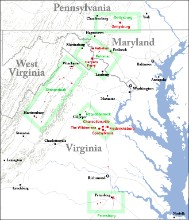
Battlefields by Region
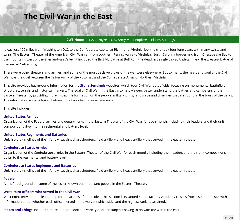
Civil War in the East
This companion website provides in-depth information such as biographies of many commanders, information on West Point graduates who fought in the war, unit histories of the regiments and batteries that fought in the Eastern Theater, and month to month organizations of the armies throughout the war. Many pages in the Stone Sentinels website link to this resource.
Advertisement
9 Significant Historical Sites of the American Civil War
- Share Content on Facebook
- Share Content via Email
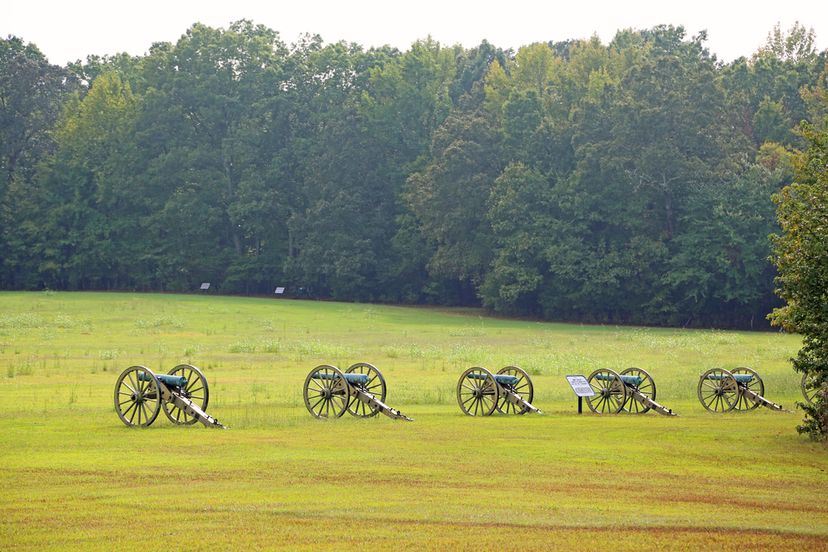
From 1861 to 1865 this iconic battle of North versus South waged on to determine the fate of slavery in the United States of America. This battle for civil rights and freedom was a defining moment in our nation’s history and marked the abolition of slavery and the preservation of the United States as one indivisible nation. The Civil War remains today as the deadliest war in American history, with approximately 620,000 military , not to mention the undetermined civilian casualties as a result of the relentless battles. From Gettysburg to Andersonville to Richmond, many of the historic sites are preserved and can still be visited today. Here are a few we recommend any history buff check out:
9. Appomattox Court House National Historical Park -Appomattox, Virginia
Among the preserved and reconstructed buildings at this national historic park is the McLean House. This important building is where General Robert E. Lee surrendered the Confederacy to Union commander Ulysses S. Grant on April 9th, 1865, effectively ending the Civil War. Today the park is home to many original artifacts tied to the events which occurred here, including the pencil used by General Lee to make corrections to the terms of surrender. The park’s visitor center is open daily from 8:30am – 5:00pm and admission is $10 per vehicle.
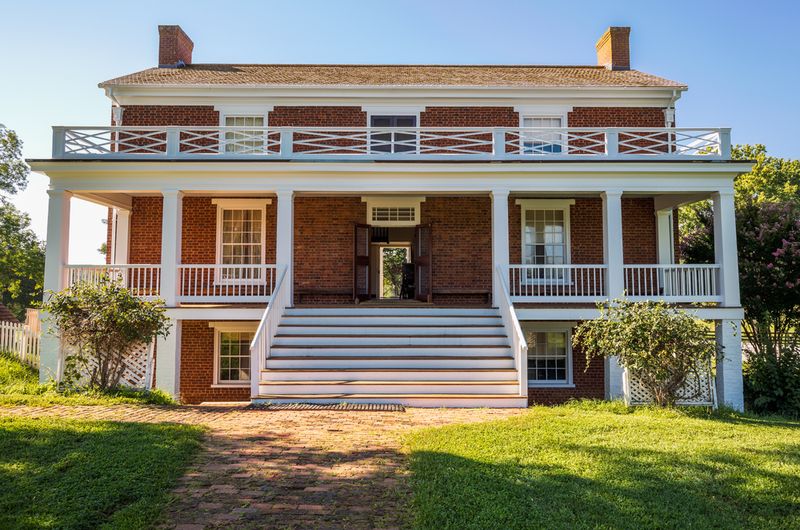
8. Shiloh National Military Park -Shiloh, Tennessee
Shiloh National Military Park preserves the battlefields of Shiloh and Corinth in southern Tennessee and Mississippi. The Battle of Shiloah was one of the first major Civil War battles in the south and resulted in nearly 24,000 soldiers killed, wounded or missing. After this battle the Union troops took the railroad junction at Corinth which is why the sights of both battlefields are preserved within this National Park designation. Among the attractions of these historic sites are the Shiloah National Cemetery, the Confederate Memorial in Shiloah Park, Siloah Indian Mounds and the Sunken Road.
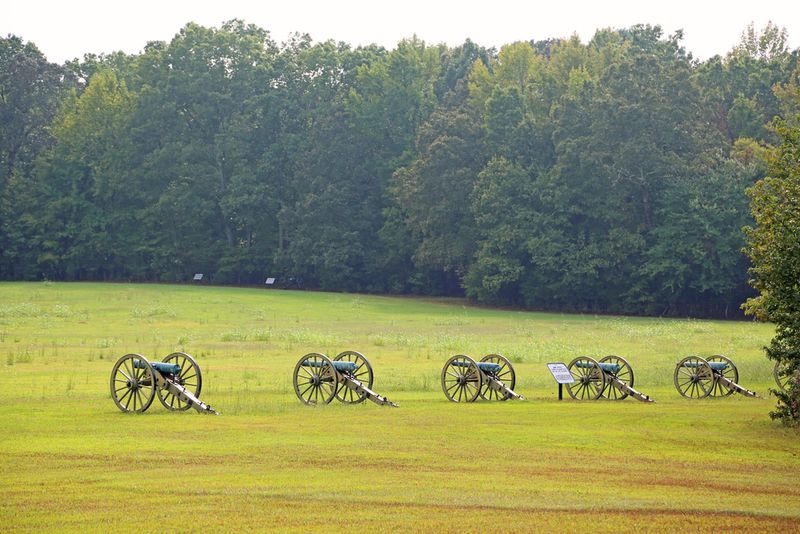
7. Richmond National Battlefield Park -Richmond, Virginia
Richmond, Virginia played an integral part of the Civil War, having served as the capital of the Confederate States of America during this time. As a result, there are numerous sites of historical significance to be found throughout the city and surrounding counties. Richmond National Battlefield Park includes 13 distinct sites or units, each commemorating an important event or location of the American Civil War. Among these sites are Fort Harrison, Cold Harbor, the defensive battery of Drewry’s Bluff and the famous Tredegar Iron Works, now home to the park’s main visitor center.
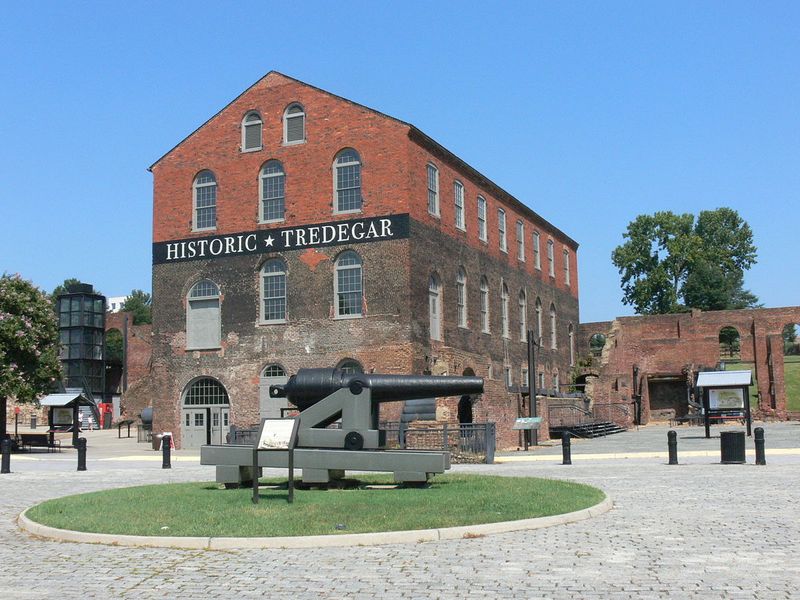
6. Antietam National Battlefield -Sharpsburg, Maryland
On September 17, 1862 the Battle of Antietam was fought at the foothills of the Appalachians along Antietam Creek in Sharpsburg, Maryland. This was a significant battle as it marked the end of General Robert E. Lee’s first invasion of the North during the Civil War. Today, the area and its historic sites have been preserved as a National Park and included on the National Register of Historic Places. Each year over 330,00 people visit the park which includes such attractions as a visitor center, National Cemetery, Maryland Monument and the Pry House Field Hospital Museum.
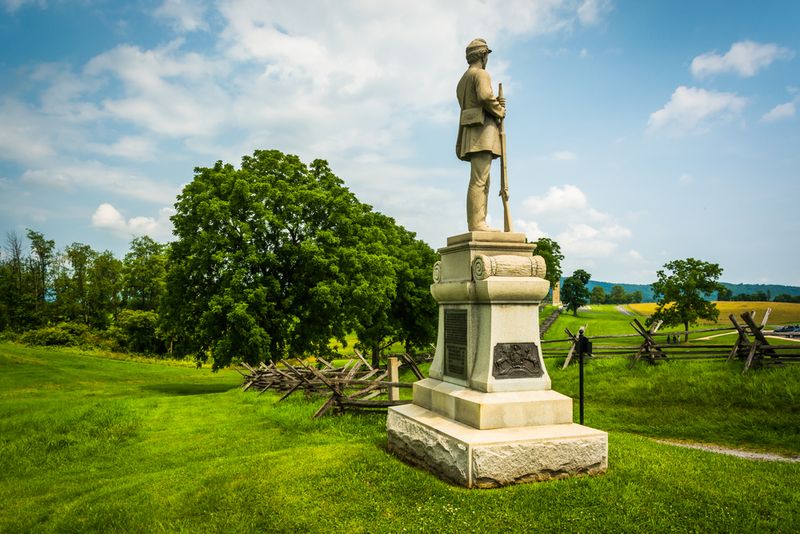
5. Fredericksburg and Spotsylvania National Military Park -Fredericksburg, Virginia
This Civil War site in Virginia gives you a 4 in 1 experience as this National Military Park covers 4 important battle sites of the Civil War; the Battle of Fredericksburg, Battle of Chancellorsville, Battle of the Wilderness, and Battle of Spotsylvania Court House. The park includes 5 preserved structures open to the public (one of which is the location where Stonewall Jackson died of injuries sustained during the Battle of Chancellorsville) and at over 8374 acres, Fredericksburg is the second largest military park in the world.
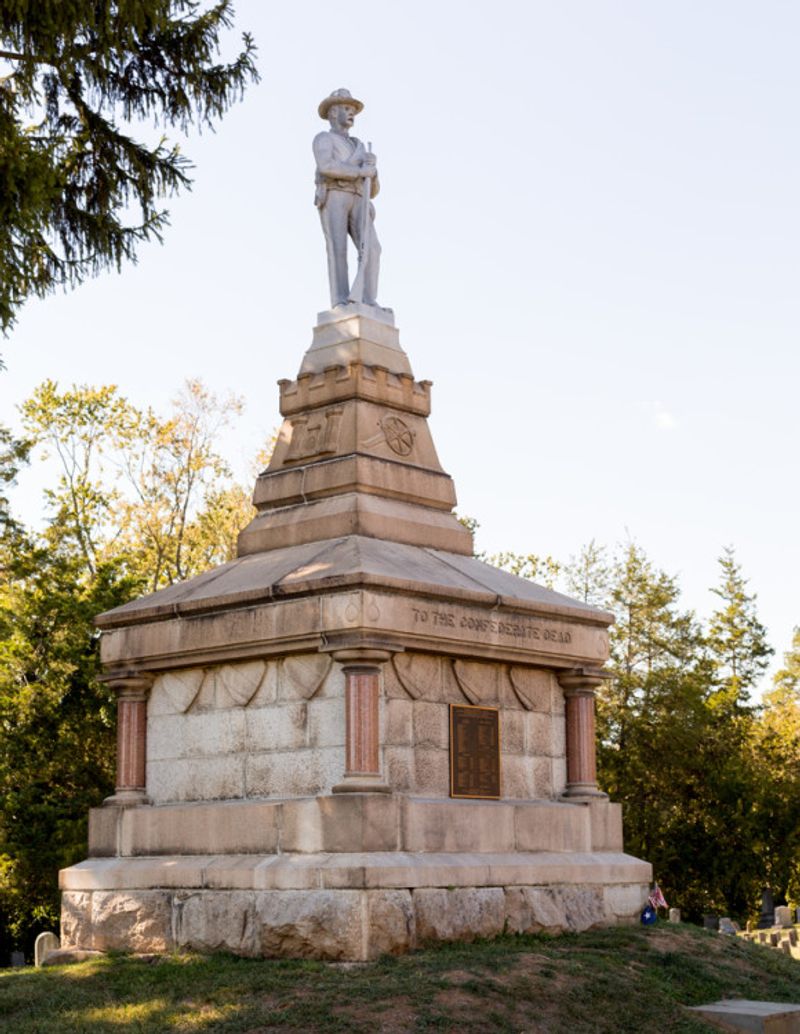
4. Andersonville National Historic Site -Andersonville, Georgia
When we think of POW camps, our minds tend to lean more to Europe and the camps of WWII, long before this however there were POW camps right here in America. Andersonville National Historic Site in Georgia preserves the site of Camp Sumter, also known as Andersonville Prison which was a Confederate POW camp during the Civil War. The site is open to the public and includes a National Cemetery, prisoner-of-war museum, and remains of the camp itself. Visit this site to pay your respects to the over 13,000 men that died here as a result of the unlivable conditions; a somber reminder of the horrors of war camps.
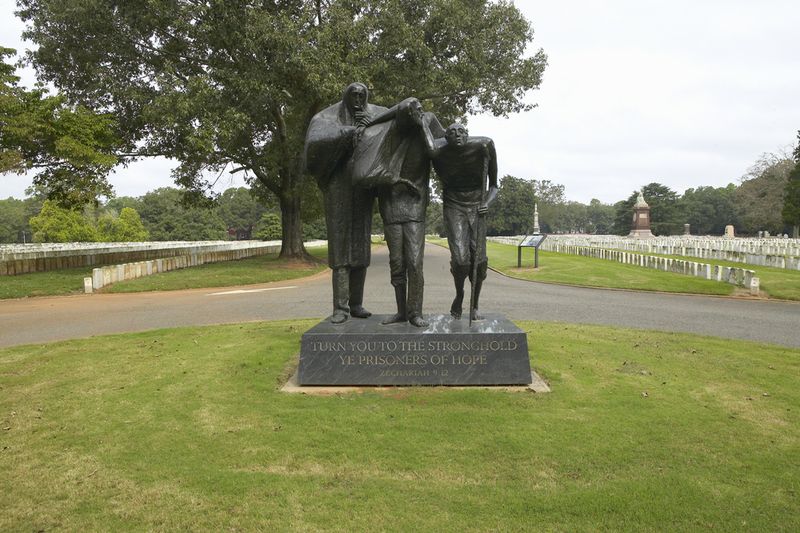
3. Chickamauga and Chattanooga National Military Park -Fort Oglethorpe, Georgia/Lookout Mountain, Tennessee
This military park encompasses two distinct locations which were the sites of two significant Civil War battles; the Battle of Chickamauga in Georgia and the Chattanooga Campaign at Lookout Mountain, eastern Tennessee. The park consists of four main areas: Chickamauga Battlefield, Missionary Ridge, Lookout Mountain Battlefield and Point Park and Moccasin Bend. These parks preserve and recount the long and hard-fought battle of the Chattanooga Campaign; the power struggle of North vs South for domination and control of this “Gateway to the Deep South”.
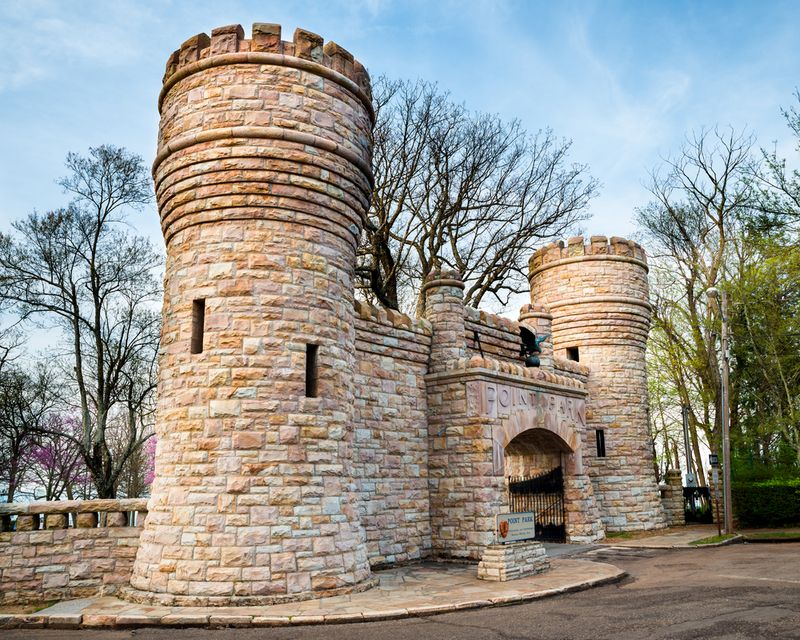
2. Fort Sumter National Monument -Charleston, South Carolina
Fort Sumter is credited as being the location where the American Civil War really began, when on April 12, 1861 Confederate artillery opened fire on this Charleston Harbor fort. While there are several sites associated with Fort Sumter that are accessible by land, including the visitor center, visiting the fort itself will require transportation by boat as the fort sits in Charleston Harbor. Visitors can either take the public boat tours operated by Fort Sumter Tours at a cost of $19 for adults and $12 for children, or if you have your own boat, there is no admission to visit Fort Sumter on your own.

1. Gettysburg National Military Park -Gettysburg, Pennsylvania
It’s no accident that the site of the most notorious battle of the American Civil War comes in as the number one historical Civil War site to visit in America. The Battle of Gettysburg in 1863 was the bloodiest of the entire Civil War with an estimated 46,000-51,000 casualties from both sides. The result of this battle was a Union win, which ended Robert E. Lee’s second and most ambitious invasion of the North. The significance of this battle was such that it spawned President Lincoln’s famous Gettysburg Address which honored the fallen soldiers of this bloody clash. Today, the public can appreciate the significance of Gettysburg with a visit to the visitors center, the Soldier’s National Cemetery or David Wills House.
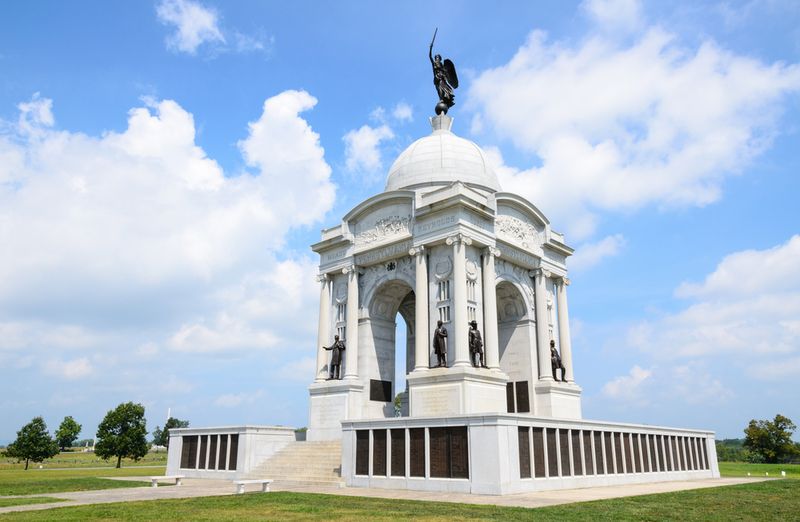
Please copy/paste the following text to properly cite this HowStuffWorks.com article:
- Outdoor Activities
- Destinations
- Book Hotels, Flights & Cars
- Advertise With Us
- Cookie Settings
Copyright © 2024 MapQuest Holdings LLC, a System1 Company
- Terms of Use
War News | Military History | Military News
Top american civil war sites to visit today.
- War Articles
- Early Modern
- American Civil War
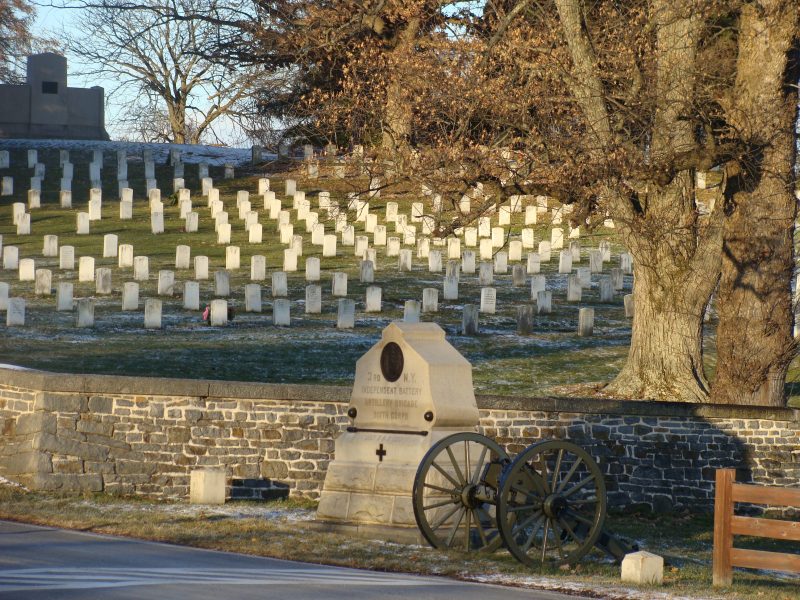
The American Civil War was one of the bloodiest wars fought on American soil. Many of the war sites found throughout the eastern half of the United States have been very well preserved and are still easily visitable today.
In fact, many of these sites are large tourism draws for the various towns and states where they reside. If you’re planning a visit to the U.S., check out a few of our favorite Civil War sites below.
1. Gettysburg, Pa.
Of course, when most people think of the Civil War, they automatically think of Gettysburg. The important destination is only a short drive away from Philadelphia, making it an easy day trip if you’re already visiting the historic city.
Gettysburg was the site of not only President Abraham Lincoln’s all-important Gettysburg Address, but also remains a crucial turning point in the war, effectively making it very clear that this would not be one the Confederates would win. The spot is also a great one to visit if you’re interested in haunted history or paranormal travel, as it’s said that a large amount of ghosts of fallen soldiers reside on, near and around the battlefield.
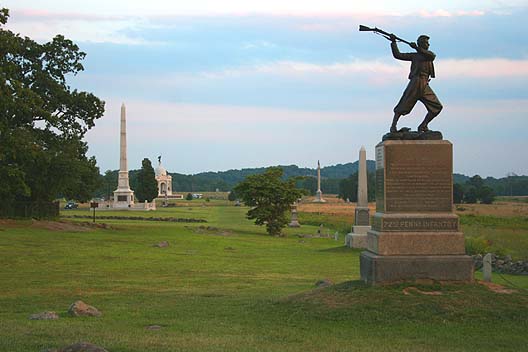
2. Fort Sumter National Monument
The history books will tell you that the American Civil War began at Fort Sumter, when the Confederates first attacked. Now, the Union fort is located within Charleston, South Carolina, a great U.S. southern city to visit regardless of your travel itinerary.
Visitors not only walk the walls of the Fort, following in the footsteps of soldiers long before, but also come to see the museum and the sites nearby. One of those additional sites is a Confederate submarine that’s on display for those with an interest in historic naval combat.
3. Manassas National Battlefield Park
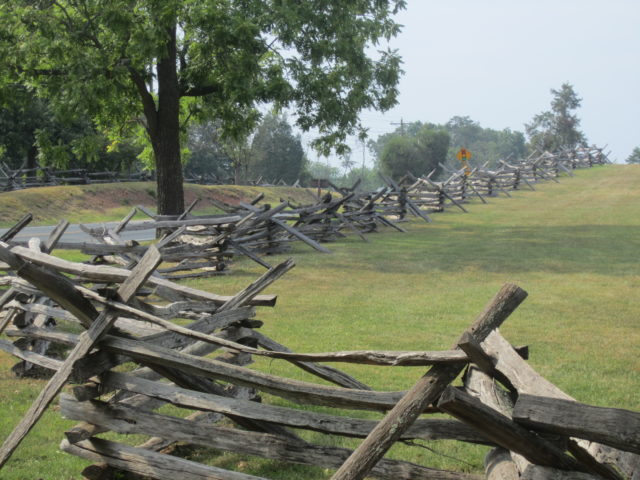
Manassas was the site of not one, but two Civil War battles, both of which were won by the Confederate troops under Stonewall Jackson. In fact, it was here that he actually earned his nickname. You can visit the battlefield, which has been very nicely preserved, as well as the on-site museum.
The staff are extremely helpful and very knowledgeable about the events which took place, from detailed troop movements to the spectators who came to watch the event from Washington, D.C., expecting an interesting skirmish, but receiving a bloody slaughter instead. Nearby are other interesting Civil War sites to visit, though none as major as the battlefield. These include plantations and war hospitals, which are still worth a visit.
4. Antietam, Md.
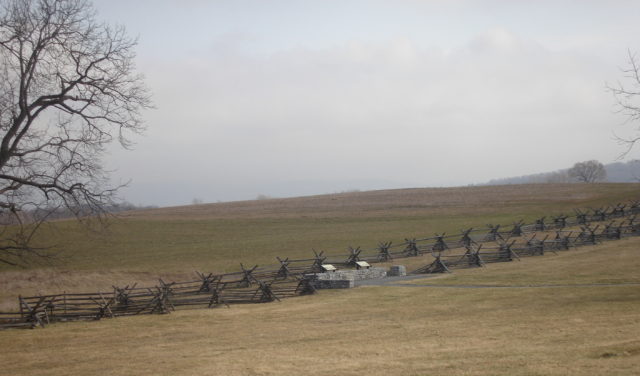
In Maryland, Antietam stands as a reminder of the single bloodiest day on American soil, during which thousands upon thousands died. The national battlefield is strikingly beautiful, however, whichever time of year you visit, and ‘living historians,’ as they call themselves, abound, dressed in Civil War garb and introducing visitors to the site’s tale.
Also visit the adjacent Antietam National Cemetery, which took the place of miles of temporary graves constructed right after the battle.
5. Richmond, Va.
Richmond, Virginia, is known as a quintessential southern city in the States, and War buffs will find quite a lot to keep them occupied when visiting the city. The area does a very good job of showing all sides of the war but places a special emphasis on the experience of African Americans during the time, something which the other sites on this list may not do as well.
Richmond is also home to Belle Isle, a war prison used by the Confederacy, a great place to visit for those interested in sites that maintain a creepy feel.
6. Andersonville National Historic Site
Along the same lines is the Andersonville National Historic Site and Camp Sumter, located in Georgia. This was basically the South’s POW camp, where they shipped all of their Northern prisoners during the war. In fact, the prison camp was filled with almost 50,000 soldiers over the course of the little more than a year that the prison camp was operational.
You can walk the camp’s almost 30 acres and explore the cramped conditions, harsh treatment and the small spring that gave prisoners hope in the midst of a very hopeless situation.
7. Appomattox Court House
This was the site that saw the inevitable defeat of the Confederacy and the surrender of the Army of Northern Virginia. A refurbished McLean House represents exactly where the surrender happened, although the original structure no longer stands, unfortunately. Souvenir looters actually tore the place apart in search of historic gems to take home.
However, you’ll still enjoy your visit, as you learn about the area and enjoy reenactments of the surrender by actors dressed as Generals Lee and Grant. Other buildings make up a village mimicking the way it would have looked at the time of the surrender.
8. Battle of Glorieta Pass
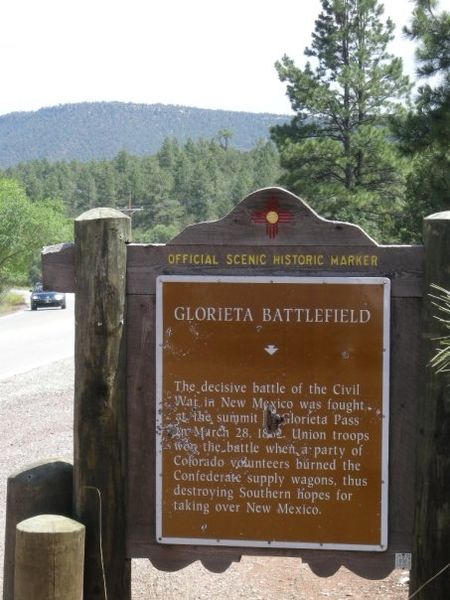
Believe it or not, there actually was one lone battle which took place on the western half of the United States, and why exactly it happened is something that still annoys historians to this day. It’s a great stop if you’re traveling in the American Southwest, and don’t have time to make it to the East’s Civil War sites. The Battle of Glorieta Pass took place in New Mexico, in what is now Pecos National Historical Park.
Basically, the Confederates wanted to take the West for themselves, ranging from New Mexico and Texas, up to Colorado and then further out to California, where they would gain both wealth and more land to extend slavery. Some say they even wanted to invade Mexico. It was an ambitious undertaking, to say the least. The Union was alerted to the fact that Confederates were on the move out west, and skirmishes ensued, after which the Confederates, of course, evacuated New Mexico.

7 of the Best Destinations for a Civil War Road Trip
Step back in time: civil war vacation stops.
Step back in time to an era in United States history that continues to fascinate scholars and history buffs to this day. Embark on the ultimate Civil War road trip full of history and breathtaking scenery. Visit famous battlefields, informative museums, notorious landmarks, and hauntingly beautiful cemeteries. What is it that draws you to this vein of history? Perhaps you can trace your family lineage to those who fought in this war. Maybe your interests just include war history and social politics. From Gettysburg National Military Park and Fort Sumter to the African American Civil War Museum and Arlington National Cemetery, you can find Civil War sites all across the U.S.
For the ultimate experience, stay in one of Select Registry’s historic properties ! Whether your interests are strictly Civil War-related or extend to all of U.S. history, you’ll be enamored by our charming bed and breakfasts. Explore cities overflowing with history. Dine in halls that historical figures, like presidents and statesmen, once inhabited. Rest your head in homes that survived the War between the years 1861-1865, and that still stand today. Take advantage of this opportunity to learn about history from a first-hand perspective. What are you waiting for? The open road is calling.
South Carolina
1. charleston, sc.
Begin your road trip where the war began, in Charleston, SC. It's pretty surprising General Sherman didn't burn Charleston on his famous March to the Sea. The holy city is, after all, where the first Confederate shots were fired at Fort Sumter, a Union fort during the Civil War. Another Civil War fort worth visiting is Fort Moultrie. Formerly a Union garrison, it was abandoned after the South Carolina Secession of 1860. Several months later, Confederate soldiers claimed it to use in the Civil War.
If you'd like to see an actual Civil War submarine, you must visit the H.L. Hunley! This is the Confederate submarine that sunk the USS Housatonic, a huge Union warship, on February 17, 1864. The crew of the H.L. Hunley are buried at the Magnolia Cemetery, another Civil War site in Charleston, South Carolina . Dating back to 1850, this cemetery is also where more than 2,200 Civil War veterans, 14 signers of the Ordinance of Secession, and 84 Confederate soldiers are buried.
2. Camden, SC
For those interested in women’s role in the Civil War, you need to visit Camden, SC. Read the famous diary of Mary Boykin Chesnut and see the city through her eyes. She was an eloquent and well-educated woman of the South. Born to Stephen Decatur Miller, a prominent South Carolina politician, Mary later became the wife of James Chestnut, a U.S. Senator who also served as a brigadier general in the Confederate army and a personal aide to Jefferson Davis. With politics in her blood, it's no wonder Mary became famous for a diary she kept during the Civil War. In it, she describes the struggles of people from all classes despite her prominent social status.
North Carolina
3. bennett place and bentonville, nc.
Journey to Bentonville Battlefield and learn about the one of the most significant battles that took place on North Carolina soil. Tour the inside of a Civil War-era historic home, the Harper House. The house was occupied by Union troops during the Bentonville battle. Despite the skirmishes that took place here, the house still stands today.
Trek from Bentonville to Durham, North Carolina and visit Bennett Place. This now peaceful Piedmont farmstead was once used as a meeting place for commanders, Confederate General Joseph E. Johnston and Union General William T. Sherman. There, they signed the South’s surrender papers in 1864. It was the largest surrender during the American Civil War.
4. Stay at the Richard Johnston Inn Bed and Breakfast in Fredericksburg, Virginia
A must-see for Civil War history buffs, the Richard Johnston Inn was built in the late 1700s by one of the original signers of the Declaration of Independence, architect John Taylor. In the 1800s, it housed the city's mayor and its namesake, Richard Johnston. In the December of 1862, a Civil war battle destroyed most of Downtown Fredericksburg. Before the battle, Confederate sharpshooters fired shots out of the Richard Johnston Inn's back windows at the Yankees on the other side of the river. Today, you can see evidence of the Civil War battle on the inn's front facade. Despite its Civil War wounds, the Richard Johnston Inn has become the most award-winning bed and breakfast in historic Fredericksburg, Virginia!
5. Stay at the 1890 Caroline House in Fredericksburg, Virginia
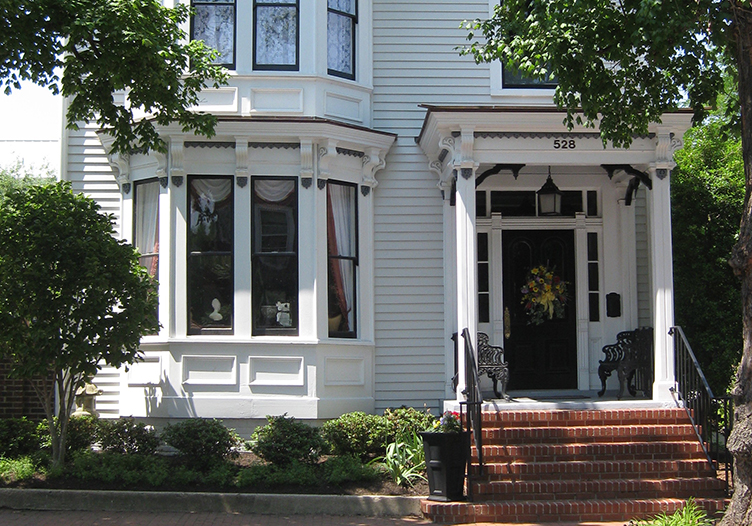
Down the street from the Richard Johnston Inn in the city's historic district, is the lovingly restored 1890 Caroline House . Owned initially by Jane Steady prior to the Civil War, the property was unfortunately destroyed in the December battle of 1862. This is the same battle that left the Richard Johnston Inn's front facade wounded. A stunning Victorian Home, the Caroline House was built in 1891 as a private residence for Robert Walker Adams, the city's treasurer. Historians call the house the "Shady Lady" due to a questionable exchange of property between Adams and his business partner, A.K. Phillips. Years later, the 1890 Caroline House left behind its “shady” past to become one of the most romantic and luxurious historic bed and breakfasts in Fredericksburg!
Pennsylvania
6. gettysburg, pennsylvania.
Who can forget the Gettysburg Address? Delivered on November 19, 1863, in Pennsylvania, this is the most famous speech ever given by President Abraham Lincoln. In under three minutes, he reiterated the importance of human equality set forth by the Declaration of Independence. This speech took place four and a half months after the Union soldiers defeated the Confederates at the Battle of Gettysburg. Given at the Soldiers' National Cemetery, this was Lincoln's proclamation of the war as a new birth of freedom that would finally result in true equality for everyone. A major turning point in the Civil War, the Battle of Gettysburg marked the end of General Robert E. Lee's second and most daring invasion of the North. The battle lasted three days and ended with 51,000 casualties, making it both the bloodiest Civil War battle and the largest battle ever fought in North America.
7. Antietam National Battlefield
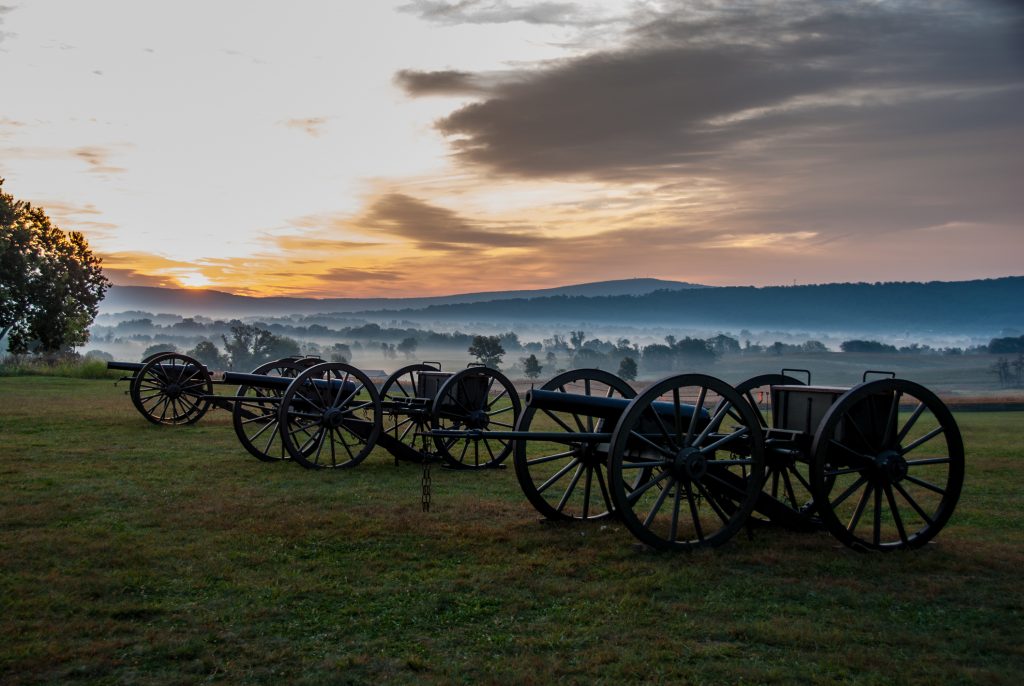
In September 1862, Confederate and Union soldiers marched through Maryland to meet at the Battle of Antietam. Today, you can drive the routes the soldiers traveled starting where Confederate General Robert E. Lee crossed the Potomac River into Maryland at Whites Ford and then on to Frederick. Along the way, stop and explore the cavalry and infantry action that took place. Once you pass Frederick, you'll continue through Middletown to South Mountain. The last stop of the driving tour is the famous Antietam Battlefield. The battlefield was the site of the bloodiest single-day battle of the Civil War.
Stay Select
Make the most of your Civil War road trip and stay in Select Registry inns and B&Bs. Maybe you’re interested in sleeping over in a historic, civil war-era manor or mansion. Perhaps you’d enjoy staying the night in a luxurious boutique hotel. Wherever you decide to rest your head, you’re guaranteed the history-filled vacation of your dreams!
Best Places to Stay in Charleston

John Rutledge House Inn
Best places to stay in fredericksburg.

1890 Caroline House

The Richard Johnston Inn
Related journal entries.

Ride the Cannon Mountain Aerial Tramway This Fall
Falls Views You Won't Want to Miss! The entire New England region is revered for its spectacular show of fall colors every year. New Hampshire, and specifically...
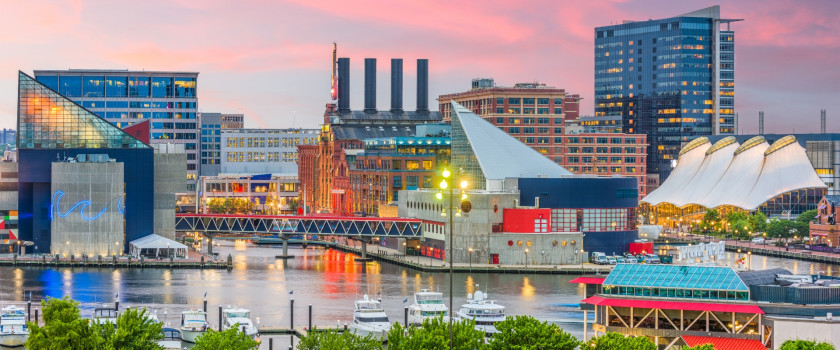
10 Amazing Things to do in Baltimore
We've talked about the wonderful things to do on the Eastern Shore of Maryland, which is perfect for those days when you want to be out of...
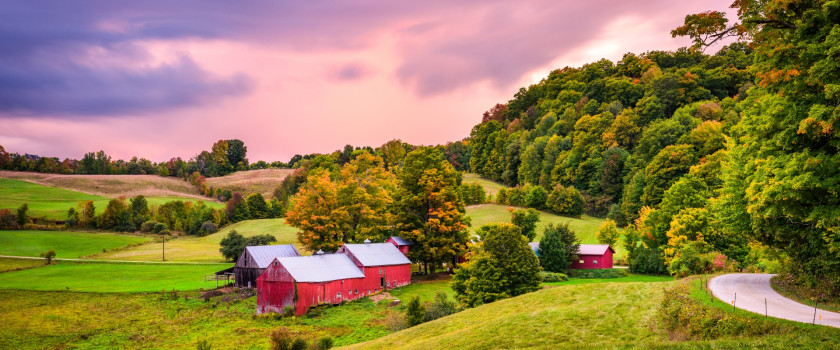
What Are the Best Scenic Vermont Drives?
Top 3 Scenic Vermont Drives Recognized for its unparalleled country landscapes and stunning mountains, Vermont is home to some of the most beautiful driving routes in the...

Start Planning Your Summer Trip to Kennebunkport, Maine
The Perfect Summer Escape! With so many incredible things to do in Kennebunkport, Maine, is it any wonder this charming location is a top destination for summer...
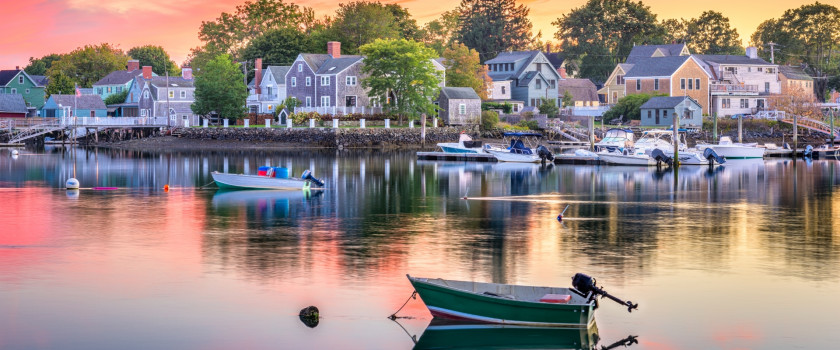
Enjoy a Summer Getaway on the Seacoast of New Hampshire
A Charming Coastal Retreat Incredible Atlantic beaches, charming historic towns mixed with hip and trendy cities, and an incredible diversity in things to do - that's what's...

Select Registry Gift Certificates
Earn rewards for your travel.

packages and Special Offers
Sign up for the newsletter.
Stay in the know about exclusive offers, travel inspiration, updates, and more from our diverse portfolio.
For Innkeepers
Craft lodging.
Craft Lodging offers authentic and personalized accommodations that showcase local culture and artisanal craftsmanship. Our curated bed and breakfasts, boutique hotels, and inns provide a unique and charming experience, with locally sourced food and personalized recommendations from knowledgeable hosts. Book your stay today to discover the magic of Craft Lodging.
©2024 Select Registry. All rights reserved.
9am-7pm Mon-Fri / 9am-5pm Sat-Sun

- Inspiration
Top 10 American Civil War sites
Read time: 8 mins
The bloodiest and most brutal battle on American soil, the American Civil War was fought between the North (Union states) and the South (Confederate states). Triggered by the election of Abraham Lincoln, it began on 12 April 1861 when Confederate forces attacked a US Union military installation at Fort Sumter in South Carolina, and ended on 9 April 1865 when General Robert E. Lee surrendered to General Ulysses S. Grant at Appomattox Courthouse in Virginia. The North triumphed, and the 13th Amendment to the US Constitution - “Neither slavery nor involuntary servitude, except as a punishment for crime whereof the party shall have been duly convicted, shall exist within the United States, or any place subject to their jurisdiction” - was ratified on 6 December 1865.
Over 150 years later, this most devastating of conflicts continues to play a critical role in America's military, social, political, and human history (although how it is systematically taught to schoolchildren varies enormously from state to state). But away from the classroom, nothing beats walking in the footsteps of heroes and seeing firsthand the scenes of struggle and sacrifice where an estimated 625,000 men lost their lives. Here’s our round-up of the 10 most visit-worthy American Civil War sites , all of which have been preserved for future generations. Not only do they bring the earliest chapters of the USA’s story to life, but also they will take you back to the time of the blue versus the grey.

Palmito Ranch Battlefield National Historic Landmark
Where: Cameron County, Texas.
Then: On 12 May 1865, the Union and Confederate forces would engage in what is widely considered the final battle of the American Civil War. Though the war had officially ended with Robert E. Lee’s surrender at Appomattox Court House more than a month earlier, there would be one more battle at Palmito Ranch on the Texas-Mexico border, near Brownsville. While casualties were extremely low (Union troops counted two killed and 28 wounded; Confederate troops suffered minor casualties and a final victory), the four-hour conflict was seen as a lost cause, described by US historian Bruce Catton as a “final, lonely, meaningless little spatter.”
Now: Myth has it that that the two armies didn’t know the war was already over, but historians feel that is questionable. Today, the site of Palmito Ranch appears much as it did in 1865 - a remote stretch of marshy prairie. There’s little battlefield interpretation except for a marker, some signage on Boca Chica Highway (Texas State Highway 4), and an observation platform that affords a good look at the battlefield. Most visitors combine a visit here with historic sites in nearby Brownsville - a major hub in the international trade flowing out of the Rio Grande.

Fort Sumter National Monument
Where: Charleston, South Carolina.
Then: The Confederate’s artillery attack of a tiny brick Union-held fort on an equally tiny island in the mouth of Charleston Harbor is most famous as the site of the first shots of the American Civil War. The first shelling took place at 4:30am on 12 April 1861, leading to the fort’s Union forces (with only 85 men and 60 cannons) enduring a 34-hour military exchange that was a call to arms for both sides. While the number of fatalities was miraculously minimal (only two soldiers and one mule), the fort became a Southern stronghold for most of the four-year war (many historians refer to this battle as the ‘first salvo’ of the bloodiest war in American history).
Now: Accessed only by boat from the sparkling Atlantic waterways, daily ferries run Fort Sumter tours year-round, leaving from two departure locations at Liberty Square in Charleston and Patriots Point in Mount Pleasant. Lasting for approximately two hours and 15 minutes, highlights include standing on the grounds where America’s deadliest war began, exploring the well-preserved fort ruins and artillery artifacts, checking out the Civil War-era cannons, spending time at the museum, and browsing the souvenir shop for history books and other paraphernalia.

Fredericksburg Battlefield
Where: Fredericksburg, Virginia.
Then: When Abraham Lincoln learned of the Union defeat at Fredericksburg, he declared, “If there is a place worse than hell, I’m in it.” Fought for several days in December 1862 at Slaughter Pen Farm and Marye's Heights, the battle was a crushing defeat for the Union but one of the most decisive victories for Robert E. Lee. Involving nearly 200,000 soldiers (the largest concentration of troops in any American Civil War battle), it resulted in Major General Ambrose Burnside relieved of his command and Abraham Lincoln criticised for not ending the war quickly. In March 2006, the Civil War Trust embarked on a $12 million fundraising campaign to purchase the 208-acre Slaughter Pen Farm on the southern end of the Fredericksburg Battlefield .
Now: Described as the “heart and soul of Fredericksburg”, the hallowed ground at Slaughter Pen Farm where Union soldiers advanced with little or no cover against strongly positioned Confederates on high ground (Prospect Hill) has a 1.75-mile walking trail with interpretive signs. Further historic sites are revealed at the 8,400-acre Fredericksburg Spotsylvania National Military Park, including Chatham Manor, Salem Church, and Ellwood Farm (where Stonewall Jackson’s amputated left arm is buried in its own marked grave).

Manassas National Battlefield Park
Where: Manassas, Virginia.
What: Not one but two army clashes on the plains of Manassas , the First and Second Battles of Bull Run (on 21 July 1861 and 28 and 30 August 1862 respectively) showed just how bloody the American Civil War could be. The Confederates won a solid victory in both, bringing them to the height of their military power and dashing any then hopes for the retreating North. This once-peaceful 5,000-acre slaughter site in the Virginia countryside was also where General Thomas J. Jackson famously acquired his nickname "Stonewall" (allegedly bestowed upon him by Barnard Elliott Bee Junior for his courage and tenacity when leading the troops to battle).
Now: The Henry Hill Visitor Centre is an excellent starting point for walking tours around the smaller First Battle of Bull Run field, and driving tours around the much larger Second Battle of Bull Run site. For background on both battles, highlights watch the introductory film, Manassas: End of Innocence, before checking out the museum’s detailed exhibits (uniforms, weapons, artifacts, fibre-optic battle map), hitting the one-mile-long Henry Hill Loop Trail, and visiting the monumental bronze statue of Thomas J. Jackson astride his horse, "Little Sorrell”.

Antietam National Battlefield
Where: Sharpsburg, Maryland.
Then: A stalemate that left some 23,000 soldiers killed, wounded, or listed as missing in action, the Battle of Antietam on 17 September 1862 was the American Civil War’s single most deadly day. And while the battle did not result in a victory for either side, the days that followed saw the peaceful village of Sharpsburg turned into a chilling burial ground that extended for miles in all directions (because of the catastrophic nature of the battle, exact numbers of casualties were impossible to compile). Following this tragedy, Lincoln created his initial draft of the Emancipation Proclamation, shifting the war's focus from fighting for reunification to fighting for slavery's end.
Now: There’s no shortage of landmarks to explore on the 8.5-mile self-guided driving tour through the battlefield; most interestingly Burnside’s Bridge, the Cornfield, and Dunker Church - a humble house of worship that’s one of the most famous churches in American military history. Further highlights include watching the James Earl Jones-narrated introductory film at the visitor centre, stopping by at the Pry House Field Hospital Museum, and walking down the church-like quiet Bloody Lane - the sunken clay road that saw most of the fiercest fighting.

Appomattox Court House National Historical Park
Where: Appomattox, Virginia.
Then: No battlefield-hopping tour is complete without a stop at the place where the American Civil War ended. On 9 April 1865, Confederate General Robert E. Lee officially surrendered to Union General Ulysses S. Grant in the parlour of the McLean House in Appomattox Court House . Established as a national monument in 1940 and a national historical park in 1954, the site comprises of over two dozen restored buildings, a reconstruction of the McLean home, the dirt road where Lee’s army finally folded its flags, a Confederate cemetery, and the entire village of Appomattox Court House - the former county seat for Appomattox County.
Now: The reconstruction of the McLean House, meticulously built by the National Park Service and opened to the public in 1949, is the obvious highlight - especially the parlour where Lee and Grant met. There’s also an excellent visitor centre where you can see the pencil used by Lee to sign the Confederacy’s surrender, tour the Clover Hill Tavern used by Union soldiers to print 30,000 parole passes for Confederate soldiers, and watch a fascinating screening of the park’s film Appomattox, With Malice Toward None (first released in April 2015).

Shiloh National Military Park
Where: Shiloh, Tennessee.
Then: Also known as the Battle of Pittsburg Landing, the Battle of Shiloh was the largest battle in the American Civil War’s Mississippi Valley Campaign, resulting in 109,784 soldiers thrown into the fight on April 6 and 7, 1862. In spite of the Union’s victory, the amount of causalities (over 23,000 men were killed, injured, or missing) was shocking to both sides. Nowadays, there are several key landmarks at the wooded battlefield just north of the Mississippi border, including the Shiloh Church, the Pittsburg Landing on the west bank of the Tennessee River, and the Sunken Road - a simple farm road that ended up being legendary as the spot for the fiercest fighting.
Now: Shiloh National Military Park is home to the battlefield of Shiloh itself as well as a United States National Cemetery for around 4,000 soldiers and their family members. Most visitors take the 12-mile driving tour for 20 tour stops at iconic places such as the Peach Orchard, the Hornet's Nest, the Albert Sidney Johnston death site, and the notorious Bloody Pond. There’s also the option of taking driving and walking tours of Civil War Corinth in Mississippi to see surviving fortifications, homes used by Civil War Generals, and portions of the Corinth Battlefield.

Andersonville National Historic Site
Where: Andersonville, Georgia
Then: Given that death was not limited to the battlefields, the military prison located deep behind Confederate lines at Andersonville is the only site in the National Park System to serve as a memorial to all American prisoners of war. Officially known as Camp Sumter (named for the south Georgia county it occupied), the facility was designed for a maximum of 10,000 prisoners (at its most crowded it held more than 32,000 men, all held in horrific conditions). Of the 45,000 Union soldiers incarcerated during the prison’s 14-month existence, almost 13,000 died (later to be buried in a cemetery created just outside the prison walls).
Now: Nothing is more haunting than the Andersonville National Cemetery beside the park’s entrance for row upon row of white headstones. There’s also two reconstructed walls to mark the 26-acre perimeter of the prison itself, and thousands of graves that illustrate the continuing cost of freedom (the cemetery is still in use; around 150 soldiers are buried here each year). The site is also home to the National Prisoner of War Museum, which opened in 1998 to honour all US prisoners of war in all wars (this also doubles as the site’s visitor centre).

Vicksburg National Military Park
Where: Vicksburg, Mississippi.
Then: The bloody scene of a 47-day siege between 18 May and 4 July 1863, the outcome at the river port city of Vicksburg split the Confederacy in two by giving the Union control of the Mississippi River. Over the course of those summer months, Ulysses S. Grant carried out one of the most effective campaigns in the annals of military history by capturing what was nicknamed the “Gibraltar of the South”. Today, there are 1,325 historic monuments and markers at Vicksburg National Military Park , including the 116-acre Vicksburg National Cemetery - the final resting place of 17,000 soldiers (the site was established by an act of Congress in 1866).
Now: Today, the battlefield at Vicksburg features 20 miles of reconstructed trenches and earthworks, a 16 mile tour road that parallels the Union and Confederate lines, 144 emplaced cannons, an antebellum home, a fascinating museum, and the restored Union gunboat-USS Cairo that sunk in 1862 (it was raised in 1964 and is one of only four surviving American Civil War ironclads). The military park can be walked or hiked, but given that it’s a 20-mile loop, a self-driving tour is your best bet (detailed maps are available at the site entrance).

Gettysburg National Military Park
Where: Gettysburg, Pennsylvania.
Then: The history of the USA hung in the balance on the first three days of July 1863, as the Battle of Gettysburg unfolded in the Pennsylvania countryside. Resulting in 51,000 casualties, this was not only the American Civil War’s biggest battle, but a fight that led to the most bloodshed in the least amount of time. Four months later, on 19 November 1894, Abraham Lincoln delivered the Gettysburg Address (“Four score and seven years ago….”) at the site’s dedication ceremony for the Soldiers’ National Cemetery, connecting the sacrifices of the American Civil War with the desire for “a new birth of freedom” that would bring equality to all.
Now: While driving along the widespread battlefield sites is an option, walking in the footsteps of the soldiers at iconic sites such as Little Round Top, Devil’s Den, Cemetery Ridge, Culp’s Hill, and Pickett’s Charge is a bucket-list must. Further battle stories come alive at the Gettysburg National Military Park Museum & Visitor Center - a state-of-the-art facility where you’ll find galleries, interactive exhibits, and multi-media presentations that cover the conflict (there’s also a cinema for screenings of A New Birth of Freedom - a short film narrated by Morgan Freeman).

More Inspiration

Searched destinations
Top Destinations
Recommended holidays

The Cliffs Hotel and Spa

Sycamore Mineral Springs Resort and Spa

Inn at Morro Bay

Self-Drive American Music & Movie Trails

Self-Drive Yukon and Alaska Explorer

Wild West Cowboys & Buffalos Family Tour
Privacy settings.
We use cookies and similar methods to recognise visitors and remember their preferences. We also use them to measure ad campaign effectiveness, target ads and analyse site traffic. They activate only after you agree by selecting "Accept". Alternatively, you can decline or customise your preferences by choosing "Cookie Settings". Additional details are available on our privacy policy page .
Cookie Settings
Customize your cookie preferences:
Sign up for our exclusive offers and holiday inspiration by email.
Sign up to our newsletter
Be the first to know about our exclusive offers and holiday inspiration by email.
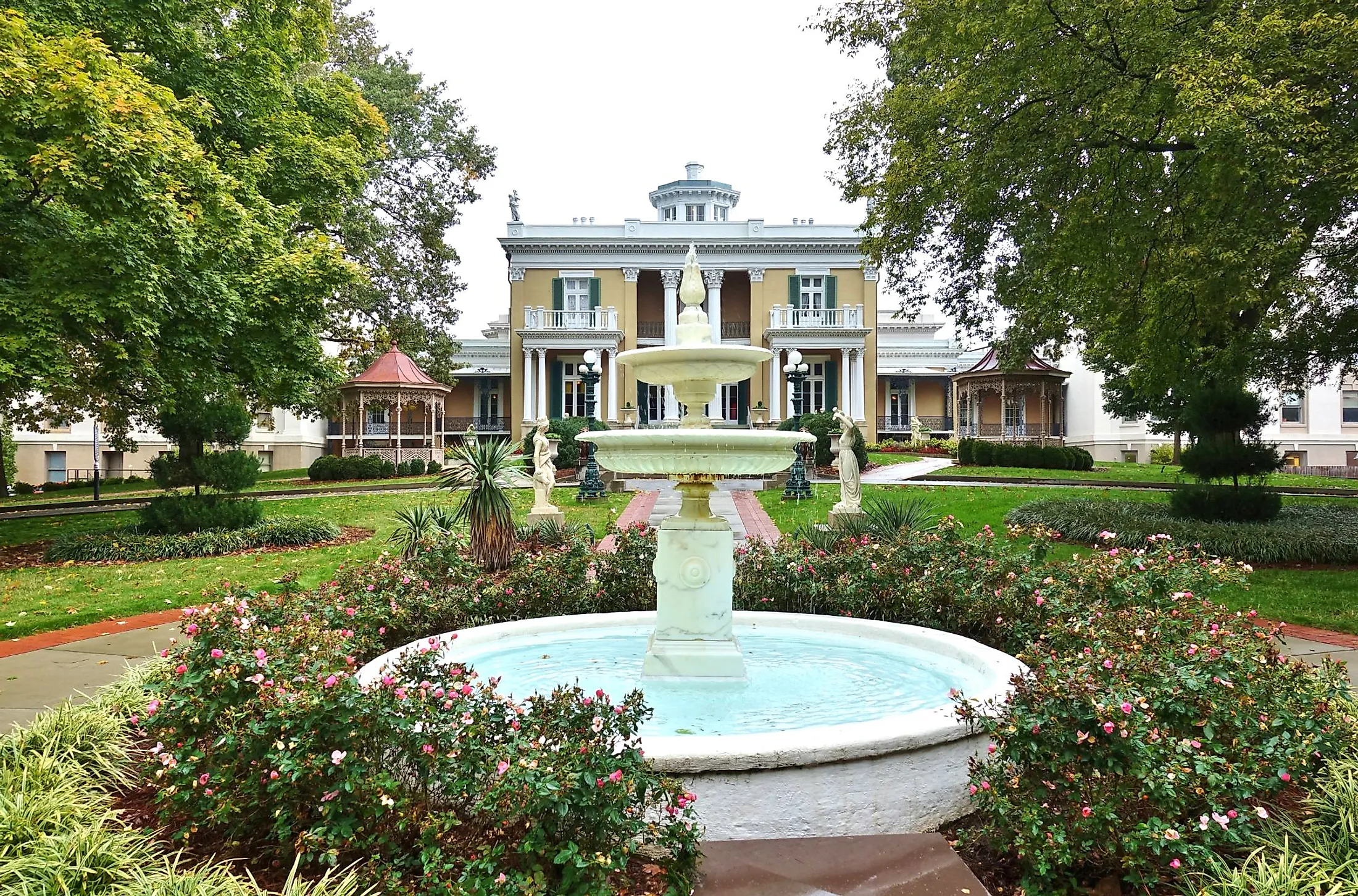
8 Civil War Sites In Nashville Every History Buff Will Want To See
The city of Nashville in the US State of Tennessee is known for its vibrant history in the American Civil War with countless sites and stories. One can travel back in time to some of the greatest battles during the war by visiting these Eight must-see sites around the city.
Battle of Nashville Monument Park
Set on the former 1,500-acre Oscar Noel farm, the park is the site stormed by the Federal troops during their assault on Stewart's line. History fans come to the small park to see the white granite-and-bronze Battle of Nashville Monument and the towering oak tree. The monument, also known as the Peace Monument, honors the sacrifices of the Confederate and Union soldiers who fought in the December 15-16, 1864 Battle of Nashville. It also honors the American soldiers who later fought in the First World War . The "basket oak" tree that stood on the farm during the battle is now a verified "Witness Tree" by the Tennessee Landmark and Historic Tree Registry. Sculpted by Giuseppe Moretti of Italy , the beautiful Italian-chiselled monument was re-built after the first, 30-foot obelisk-one, dedicated on Armistice Day, 1927, was destroyed by a tornado in 1974. Cleaning and re-setting the bronze centerpiece of the old monument, his new design dedicated on June 26, 1999, encompasses two rearing steeds for the North and the South, yoked together by a young man symbolizing all soldiers. There's the word "UNITY" inscribed on the banner entwining the horses, and a poem on the North Face, reading "...Forces That Struggled Here At The Fierce Battle Of Nashville..." Set at the corner of Granny White Pike and Clifton Lane, the park is open from dawn to dusk with free public admission.
Belle Meade Plantation
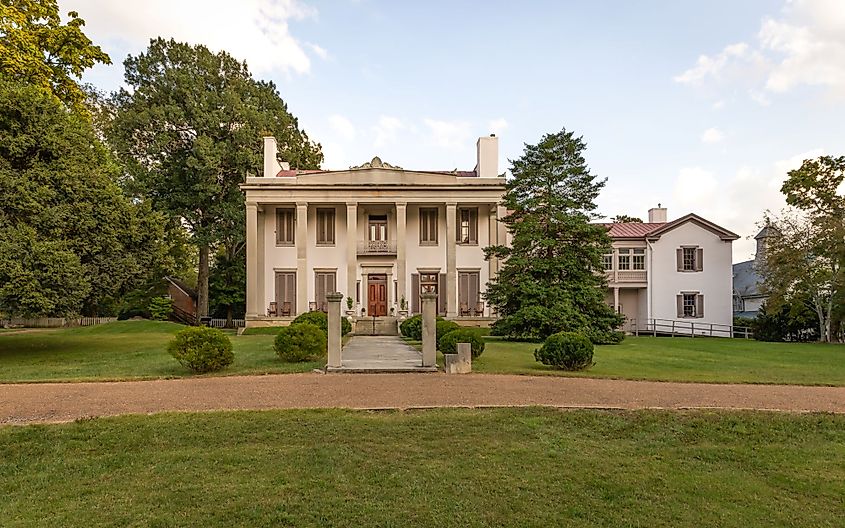
The 30-acre historic site set west of the city was one of the largest private estates in Nashville that comprised a 5,400-acre flourishing property and home to five generations of the Harding-Jackson family. Scarred by the bullets from the Civil War, people come to the "Queen of the Tennessee Plantations" for the significant history, as well as for horses. Upon expanding his home from the original log cabin, the owner, John Harding, loved and bred horses for racing. A large population of slaves worked for him as tradesmen, jockeys, trainers, and groomsmen, along with the renowned head groomer Robert Green who stayed on as the highest-paid team member after the war. Belle Meade was the focal point of many skirmishes during the Battle of Nashville that riddled the walls with bullet holes. It also served as the headquarters for Confederate Gen. Chalmers and hosted the likes of Andrew Jackson , Mrs. Cleveland, Robert Lincoln, General Grant, General Sherman, General Hancock, and Adlai Stevenson. The Harding Cabin offers demonstrations on Fridays and Saturdays from April through October to see the frontier life of 1819, while the 1853 Greek Revival mansion is open for touring throughout the year. The plantation is also known for producing hams and honey for sale, as well as for its Martha's at the Plantation restaurant supplied with organic produce by an on-site urban farm, The Harding Garden .
Belmont Mansion
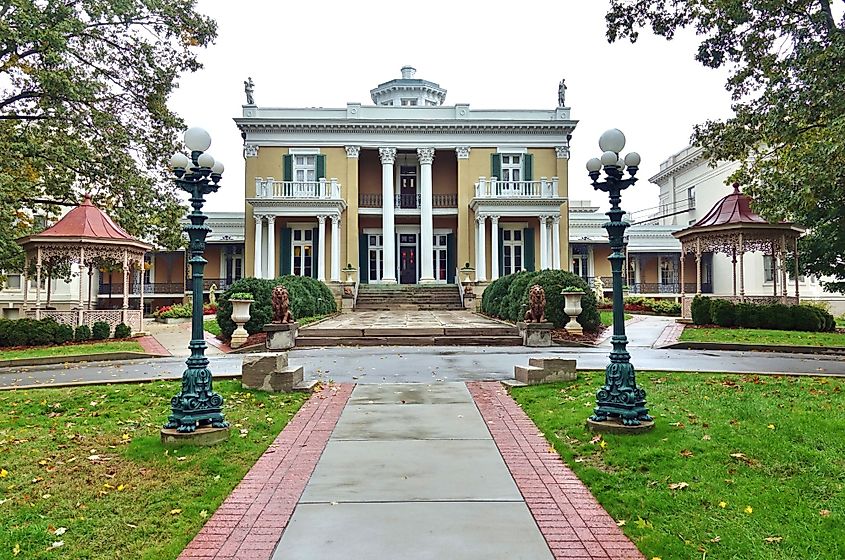
Belmont Mansion's story revolves around the life of its proprietress, Adelicia Acklen, born on March 15, 1817. Having lived a life reflected of a wealthy woman in the 19th century, she had ten children, wed three times, and lived through the Civil War. She was first married at 22 to a slave-trader-turned plantation owner, who was 28 years her senior. Upon his death in 1846, Adelicia acquired 8,700 acres of estate and cotton plantations in Louisiana, a 2,000-acre farm in Tennessee, and over 50,000 undeveloped acres in Texas, along with stocks, bonds, and 750 slaves. Marrying a lawyer at 29, their mansion was built by enslaved African Americans and European servants. Designed as an Italian villa with elaborate gardens and numerous outbuildings, it reflected their political and social stance. Completed in 1860, Adelicia and Joseph entertained visitors and raised a family at Belmont Mansion. Living in Louisiana, where he managed the Angola plantation, among other land holdings, his death in 1963 in the midst of the Civil War came as a shock to the family back in Nashville. Traveling to extract 2,800 bales of Acklen cotton that the Union and Confederate forces wanted to destroy, Adelicia sold it illegally to a broker in England for $960,000-worth of gold. She soon married the third time to a doctorate widower, while the estate would later open to the citizens of Nashville for enjoyment. In 1913, the mansion was purchased by two women to become the Belmont College. Upon changing ownership again in 1951, it became the Belmont University, known today as a coeducational, liberal arts school offering graduate degrees.
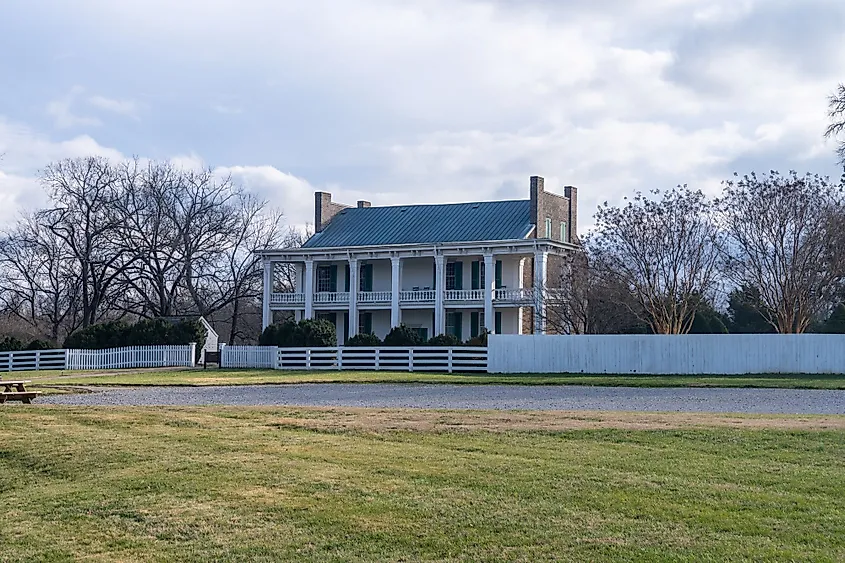
The large former Confederate field hospital for the Battle of Franklin is located at one of the Civil War battlefields near Nashville, at 1345 Eastern Flank Circle. Its white-columned façade, with lush surroundings, evokes a sense of peace from afar but comes with a ghosting tale from the past. Prior to the war, Carnton was a mayoral home that was visited by President Andrew Jackson, among many other revered Americans. The focal point in the Battle of Franklin, Carnton became the largest field hospital treating and healing hundreds of injured and dying Confederates. The hospital also witnessed the death toll of more than 7,000 soldiers from the bloodiest battle in the Civil War, whose souls allegedly still haunt the house. Today, one can see the historical evidence in the blood-stained floors from soldiers, along with a guided 60-minute house tour of Carnton for $18.
Fort Negley
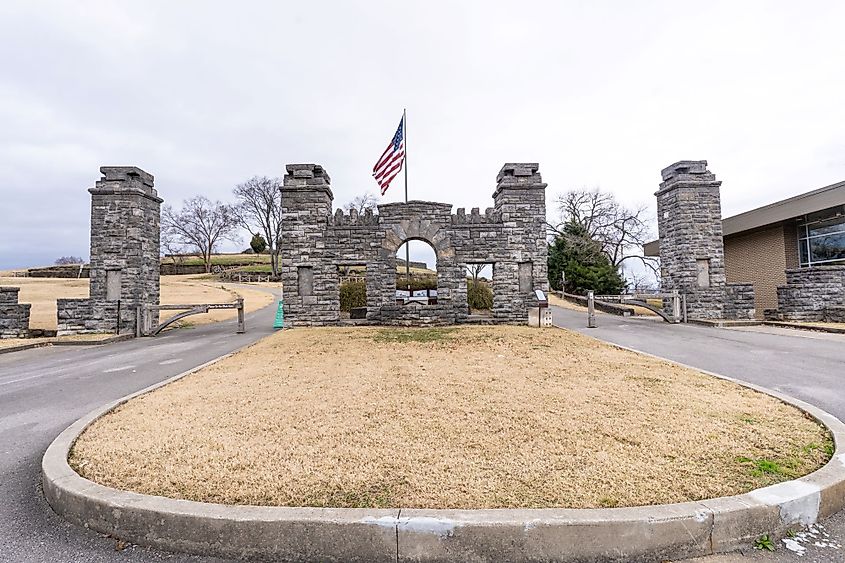
Fort Negley was erected during the Civil War by the Union troops after they took control of the city in 1862. The visitor center adjacent to the original fort offers self-guided tour maps to explore the fort at one's own pace, as well as regular events and educational programs on the fort's past and role in the Civil War. There is also an educational film reiterating various details, including the flow of the battle, along with re-enactments at the fort throughout the year. Despite serving as the Union troops' base for years, the biggest inland fort was omitted in the battles and spared of the war scars that many other sited endured. Listed on the U.S. National Register of Historic Places, the historical Civil War Site stands proudly in the south of Nashville at 1100 Fort Negley Boulevard for admission-free visits.
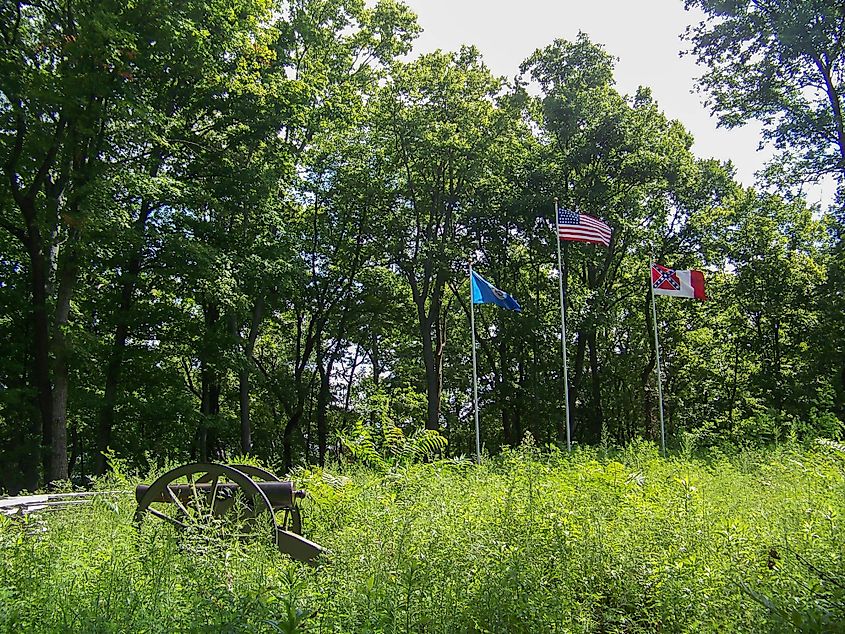
Upon charging on December 16, 1864, the Union caused the Confederate left flank to fall apart during the Battle of Nashville. Formerly known as Compton's Hill, the site marks the pivotal location where the Union achieved victory in the Civil War. Set on Benton Smith Road just south of the Harding Place, history fans visit Shy's Hill to see the hallowed ground and its memorials with a reminiscing vibe of its by-gone days lingering in the air. Now, a sub-urban hill in Nashville, it is laden with shops, homes, and roads in the surroundings of a wooded natural area for a peaceful getaway right in the city. Inclusive with scenic trails overlook, and commemorative plaques, one can attain some Civil War knowledge along with exercise is a great outdoor setting.
Stones River Battlefield
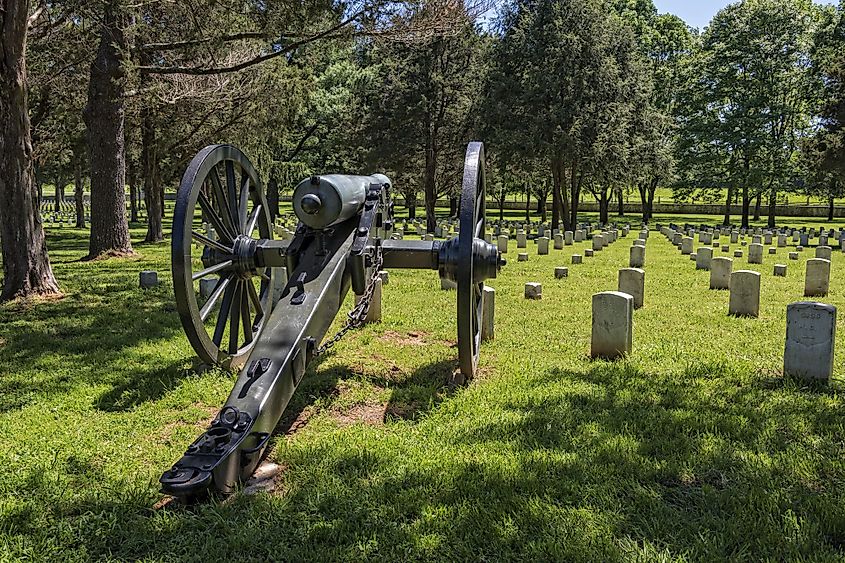
The battlefield where the Union achieved the course-changing stronghold in Middle Tennessee is an extremely popular destination among the Civil War history fans. The Stones River Battlefield is set near Nashville at 3501 Old Nashville Highway, just a short drive from Murfreesboro. The site is open daily from 8:00 am to 5:00 pm with free admission, including a visitor's complex with a short slide show and a museum housing Civil War artifacts. There are various ways to get in touch with one of the bloodiest conflicts of the war, including guided caravan tours from May through October, where one drives after the tour vehicle, along with bike and walking tours. Some of the most notable sights on the battlefield include the Hazen Brigade Monument at the spot of the violent standoff, the picturesque Fortress Rosecrans, and the somber cemetery. Upon absorbing the knowledge, one can take advantage of the hiking, jogging, and walking trails that also offer animal-sighting opportunities. Comprising paved trails and those with more difficult terrain for various skill levels, one can reminisce over the discoveries made at the Stones River Battlefield during a stroll or some exercise.
Travellers Rest Historic House Museum
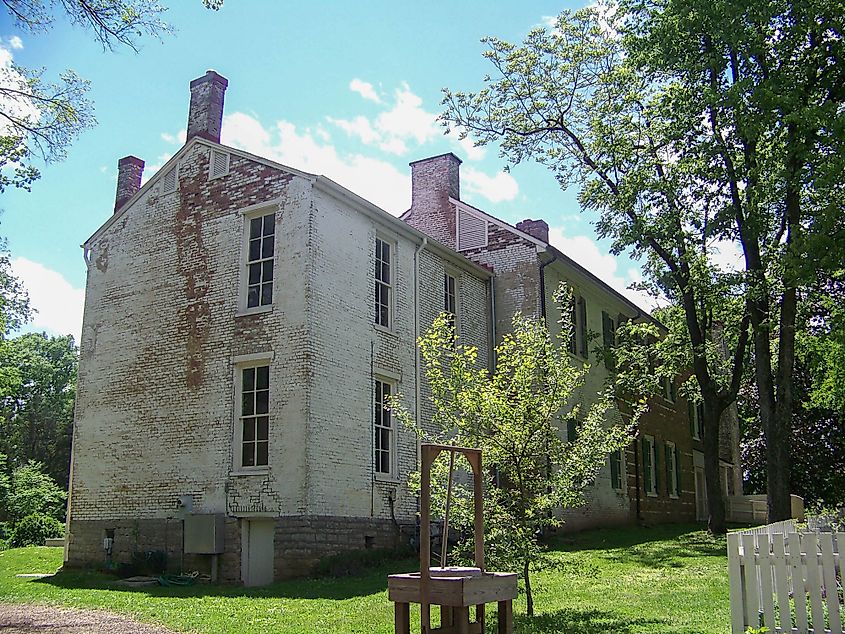
The Travellers Rest was constructed in 1799 as a plantation and home of the politician, lawyer, and businessman, Judge John Overton. Also an advisor to President Andrew Jackson, his mansion served as the headquarters for Confederate General John Bell Hood during the Battle of Nashville. Now comprising a historic museum and a Civil War site in Nashville, it showcases exhibits about the house's history. Set at 636 Farrell Parkway, the historic site is open for visits with free admission for kids, and various types of discounts, to let one explore the property and learn the details about its role in the Civil War.
History fans will revel when seeing these significant Civil War sites in Nashville via a walk in the park, a visit to a cemetery, a museum, or the focal battlefield. Set near nature and close to the amenities, one can feel part of the past right in the city for a memorable experience of re-visiting the grand war that changed American history.
More in Places
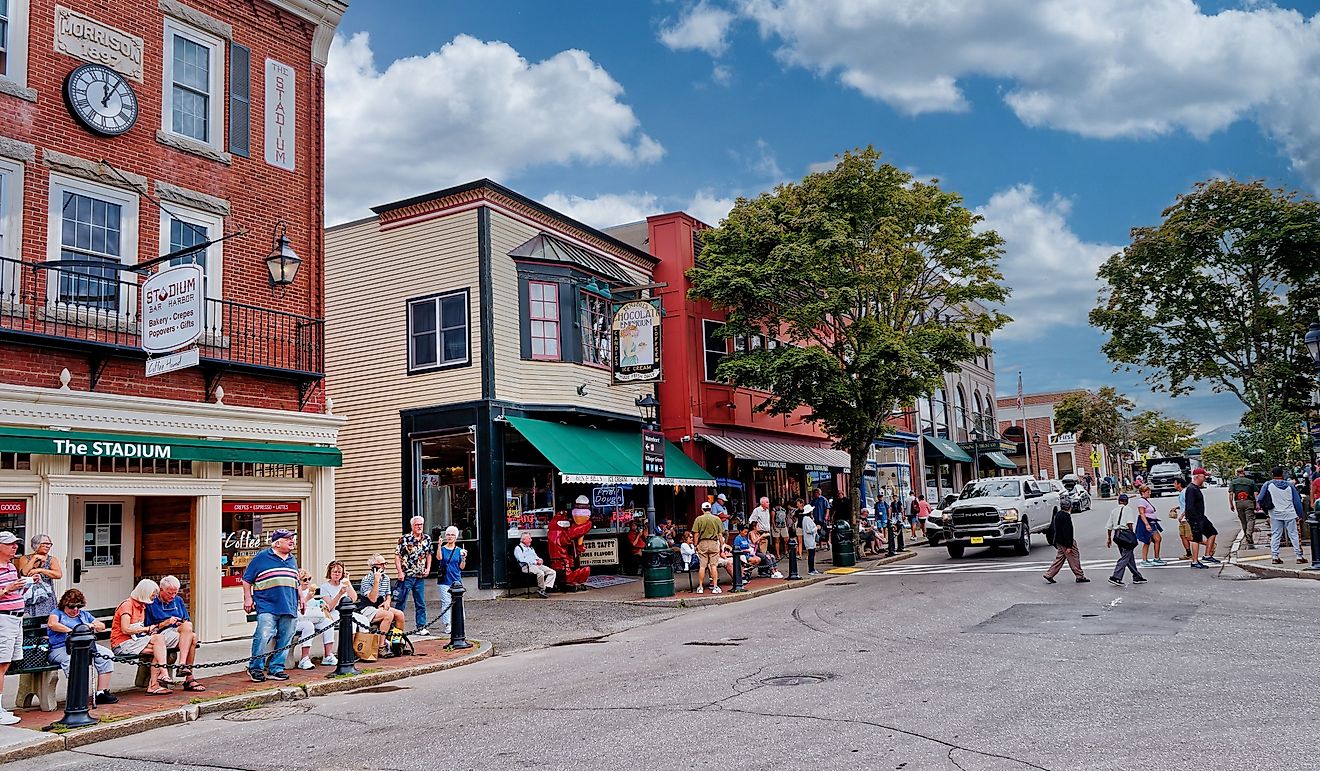
9 of the Most Walkable Towns in the Northern United States
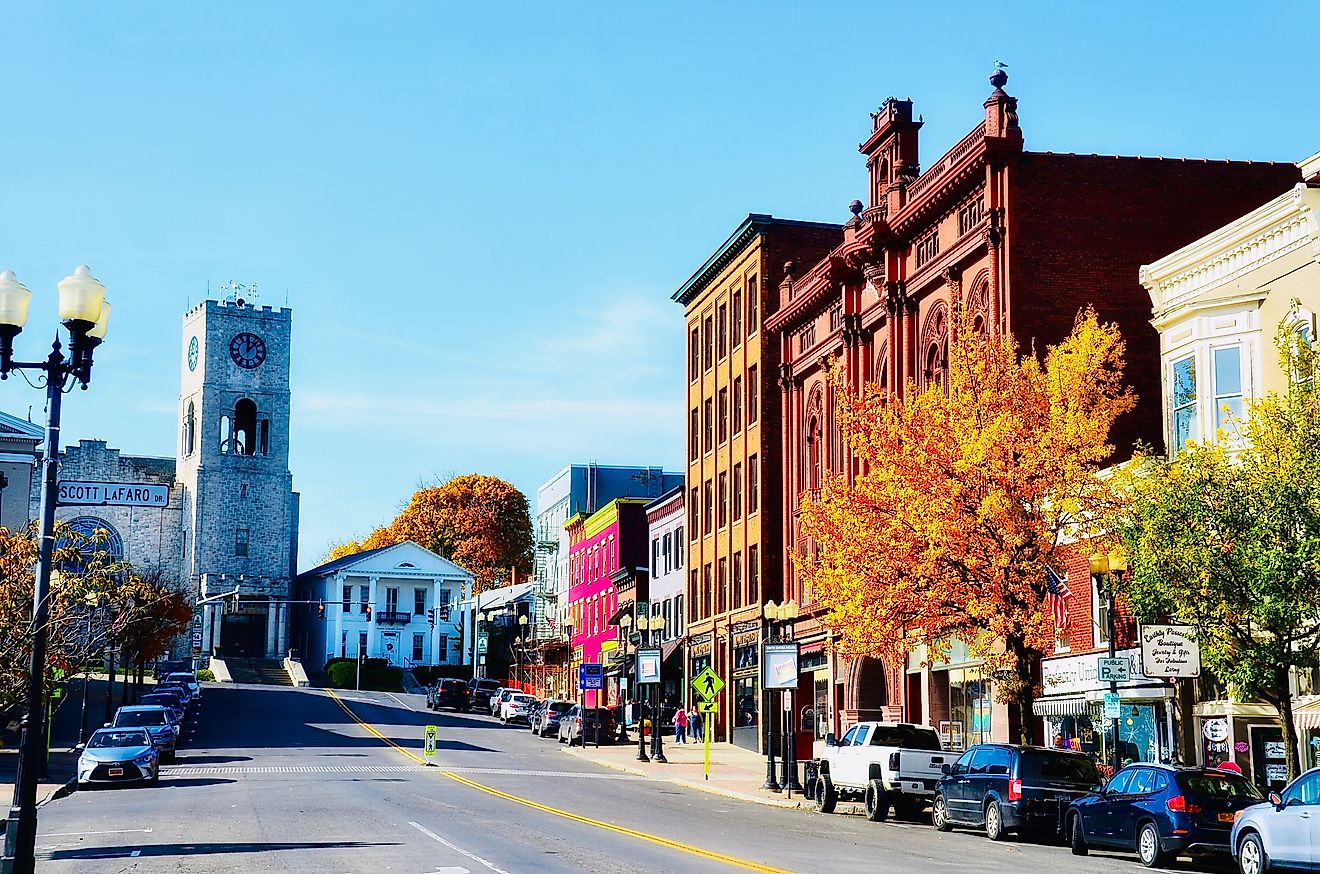
9 of the Most Walkable Towns in the Finger Lakes
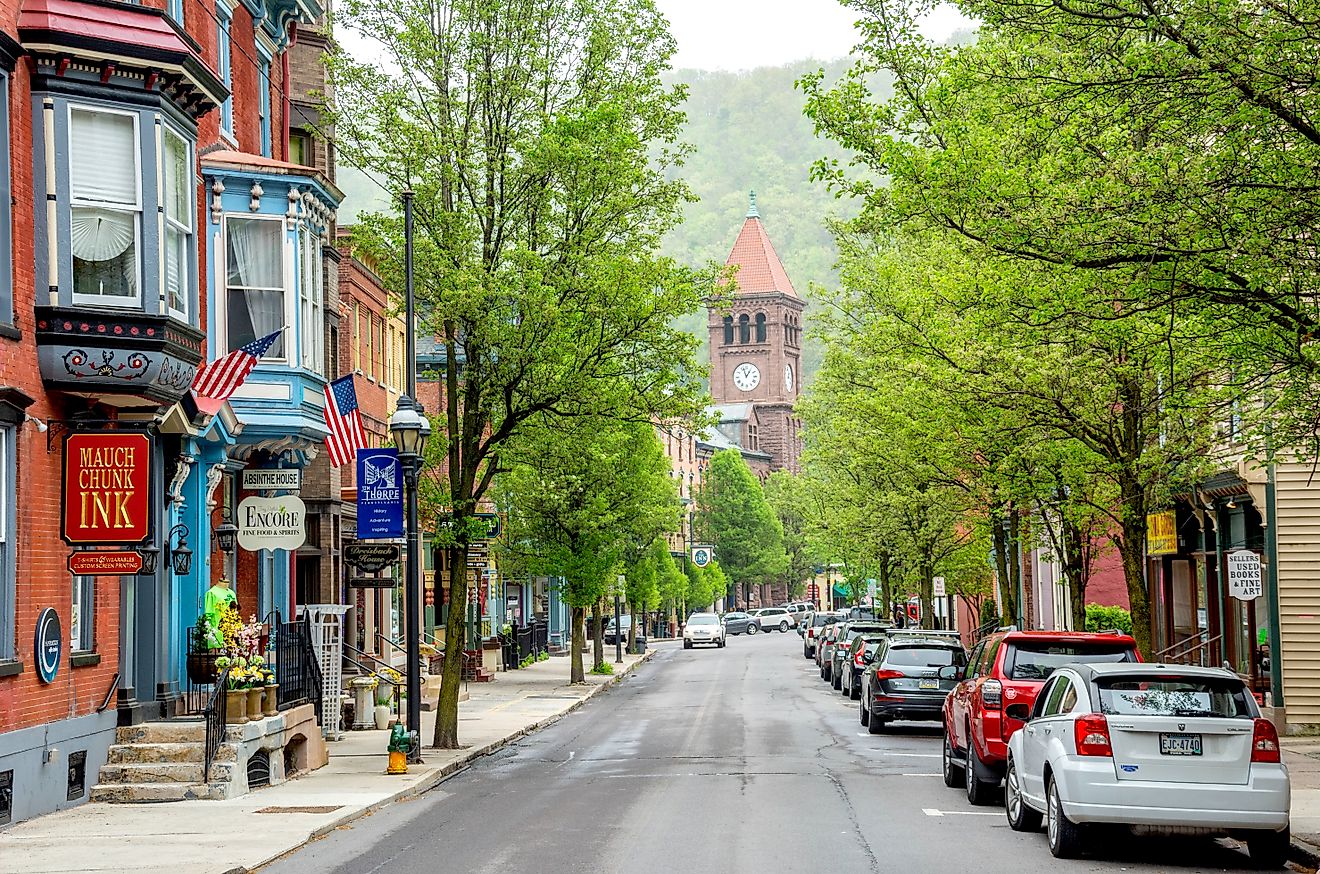
The Most Picturesque Small Towns In The Poconos
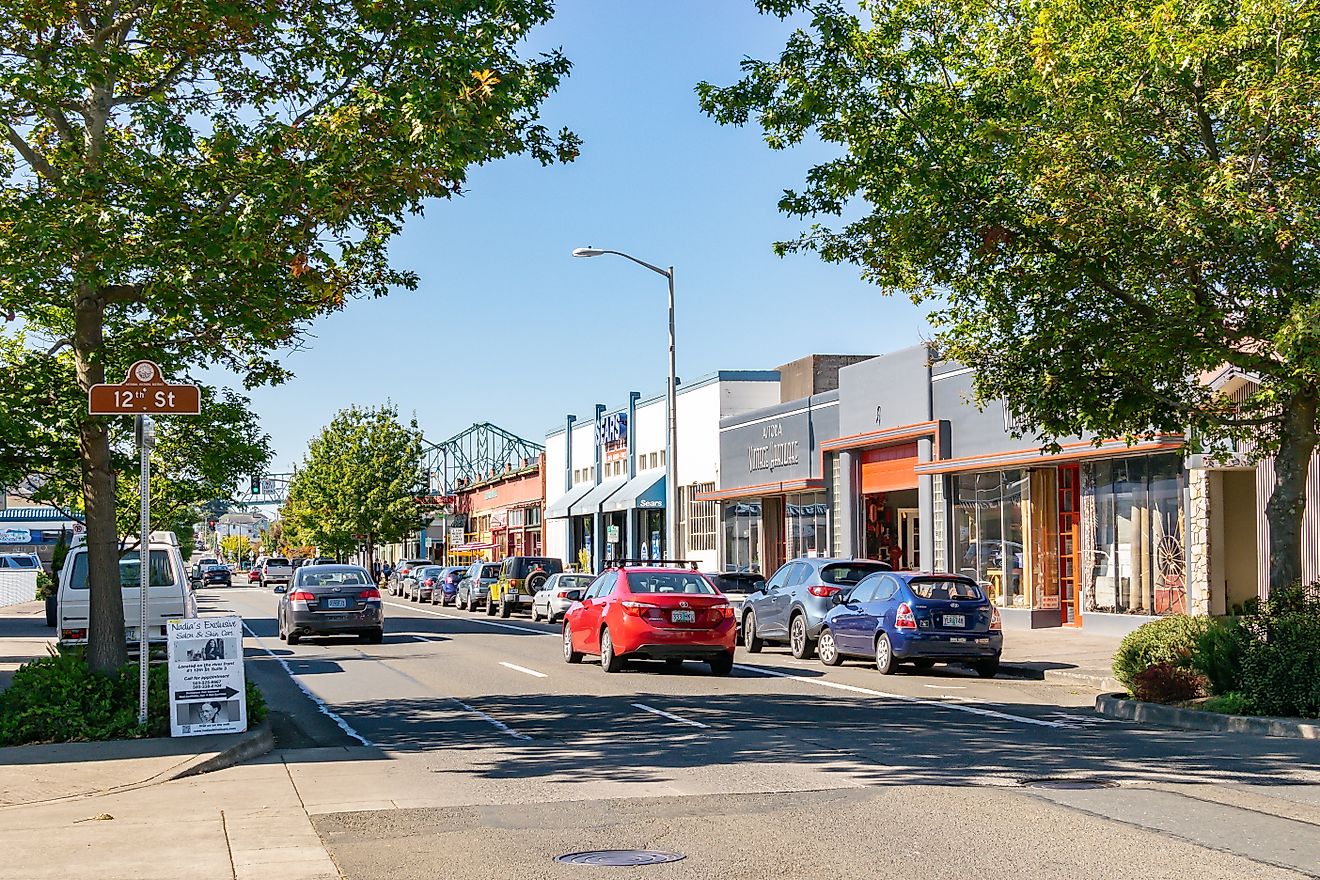
The Most Picturesque Small Towns in Oregon
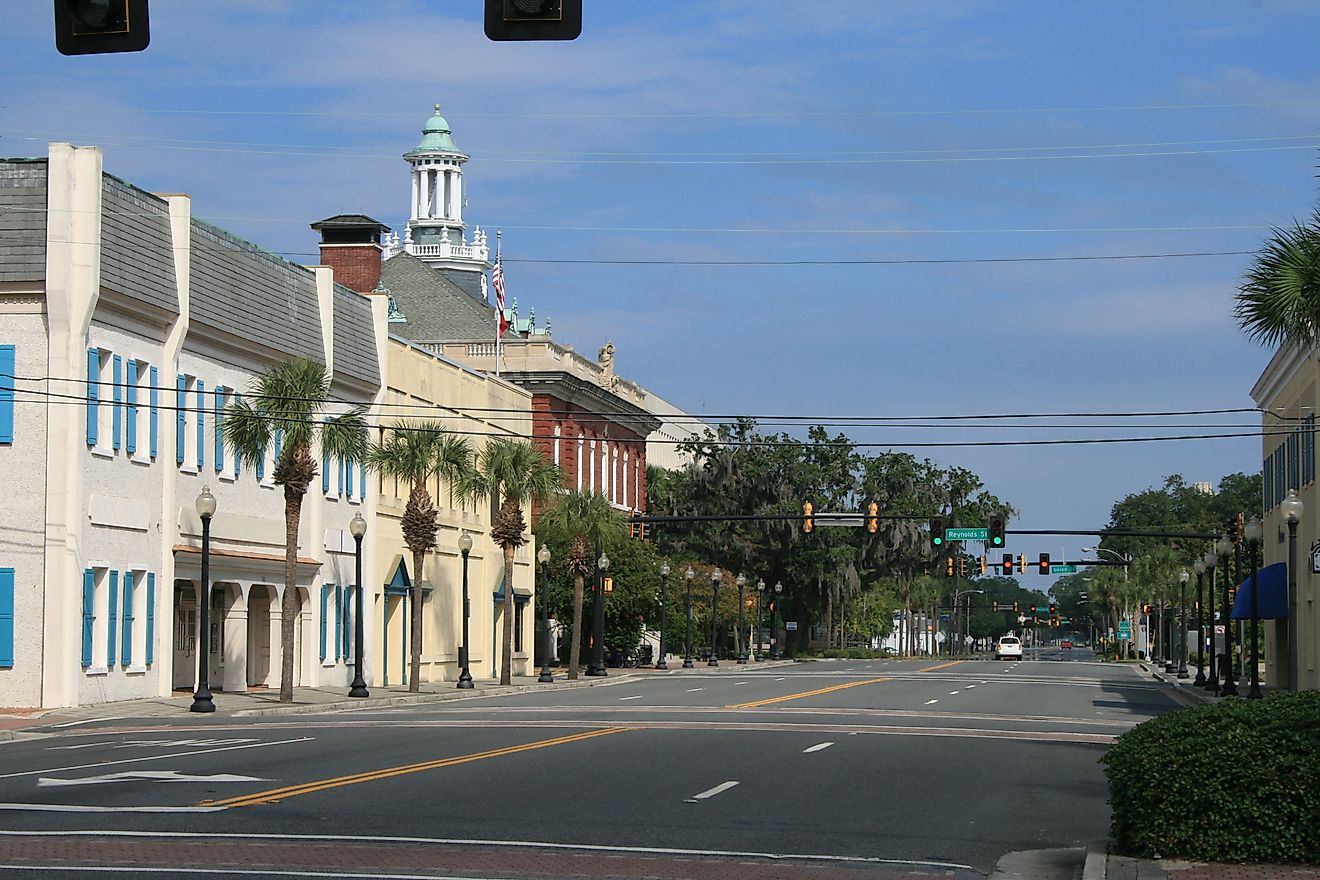
6 Budget-Friendly Towns in Georgia for Retirees
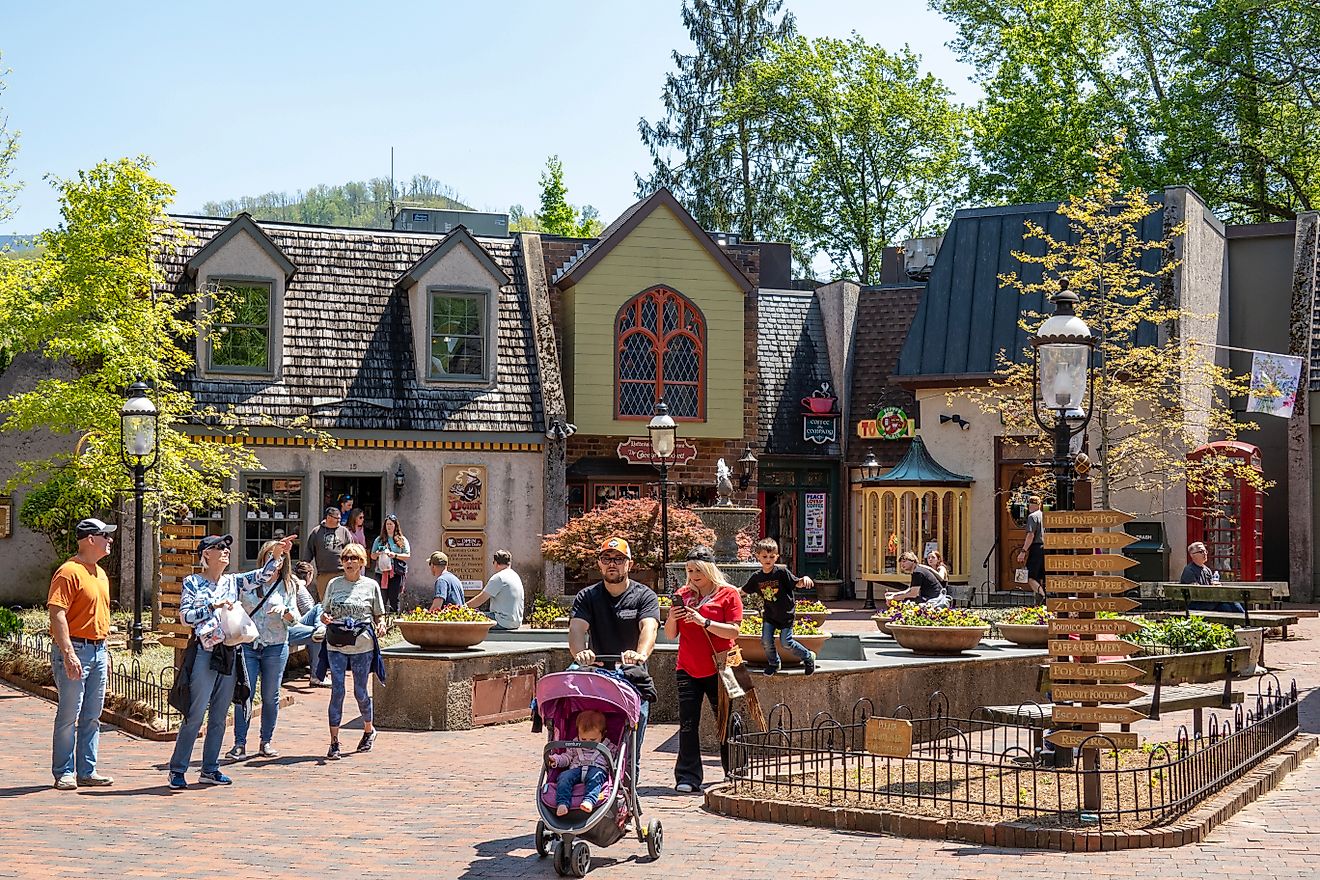
7 of the Most Charming Towns in Tennessee
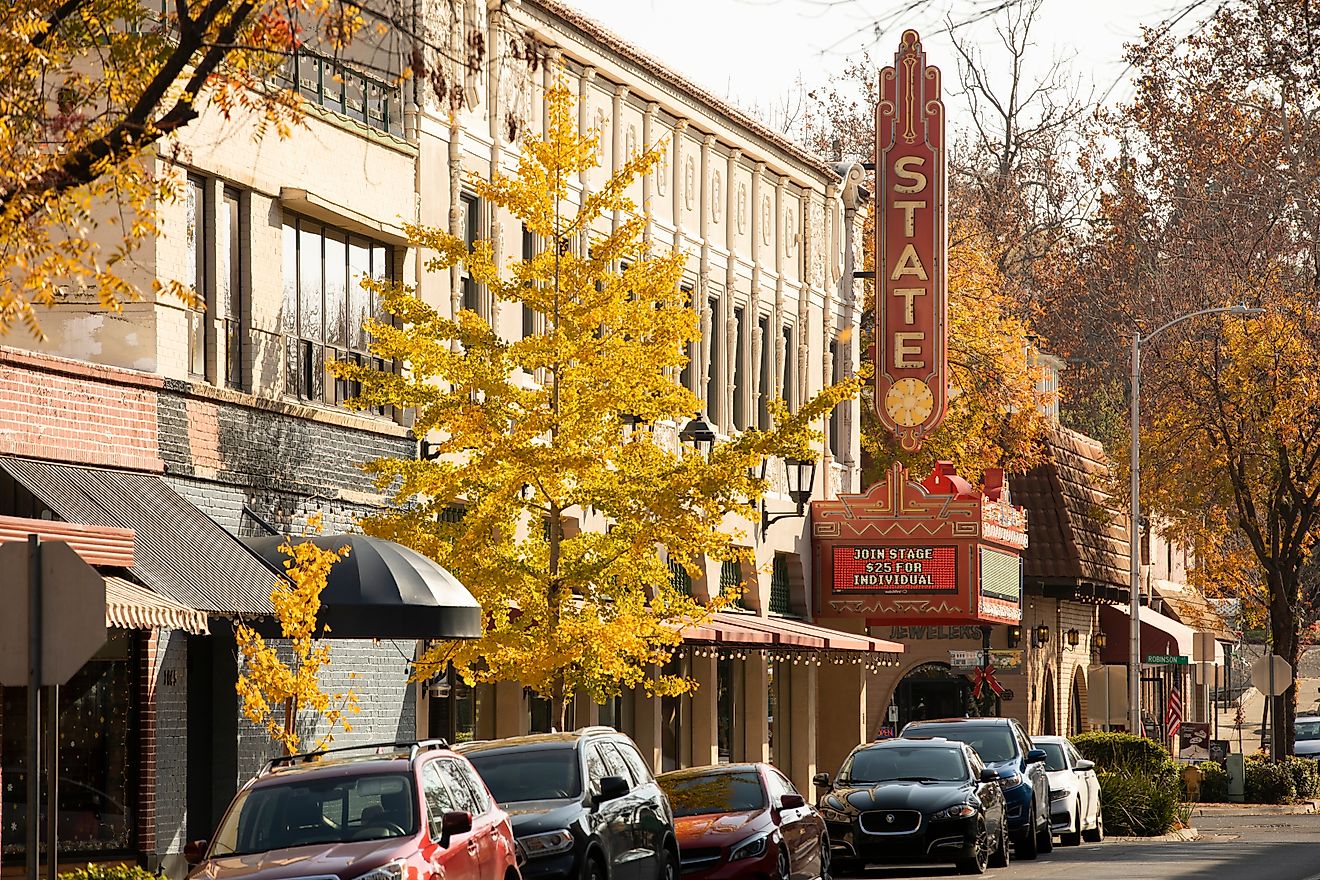
8 Ideal Northern California Destinations for a 3-Day Weekend in 2024
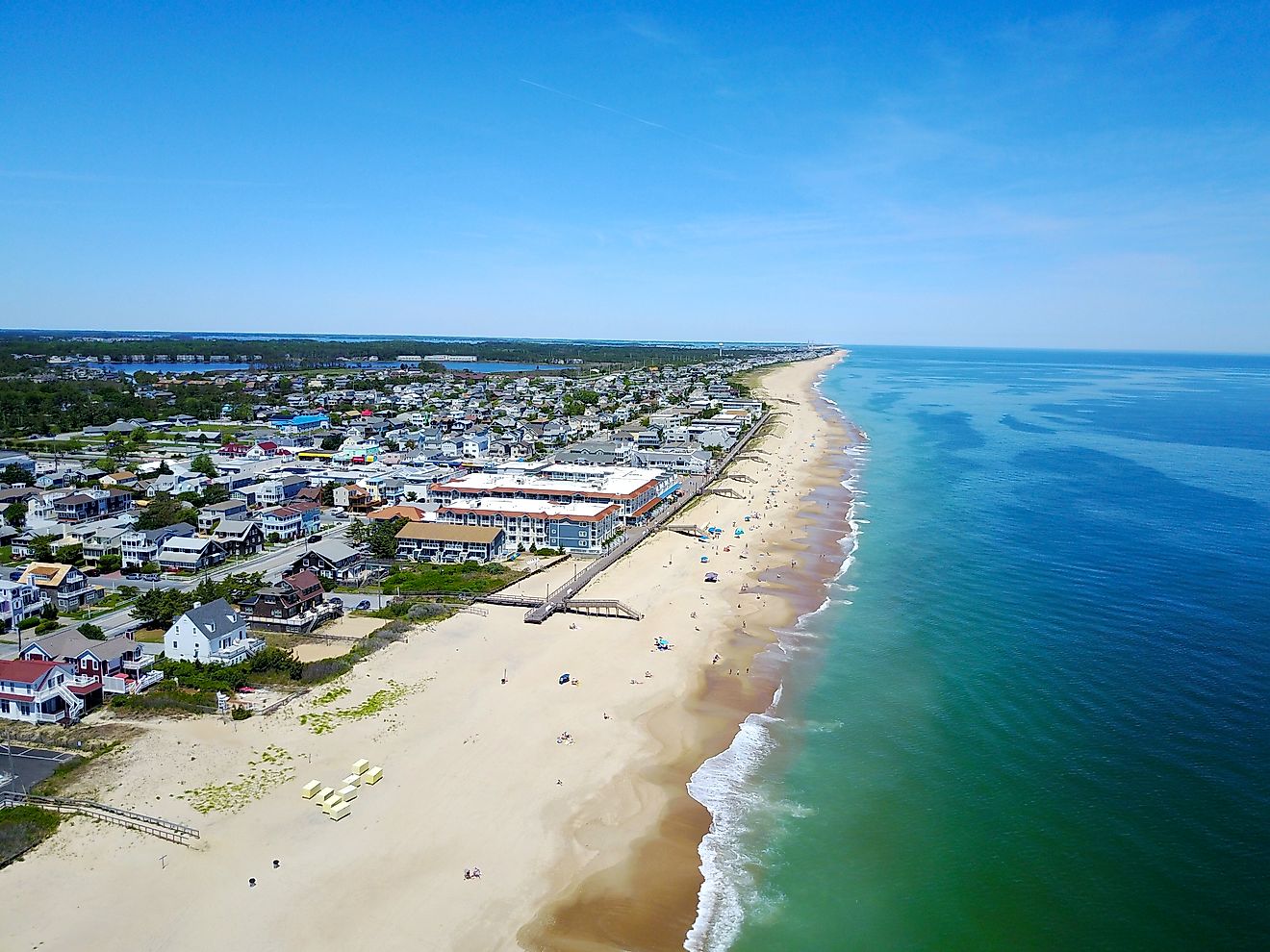
7 Most Beautiful Small Towns In Delaware to Visit in 2024
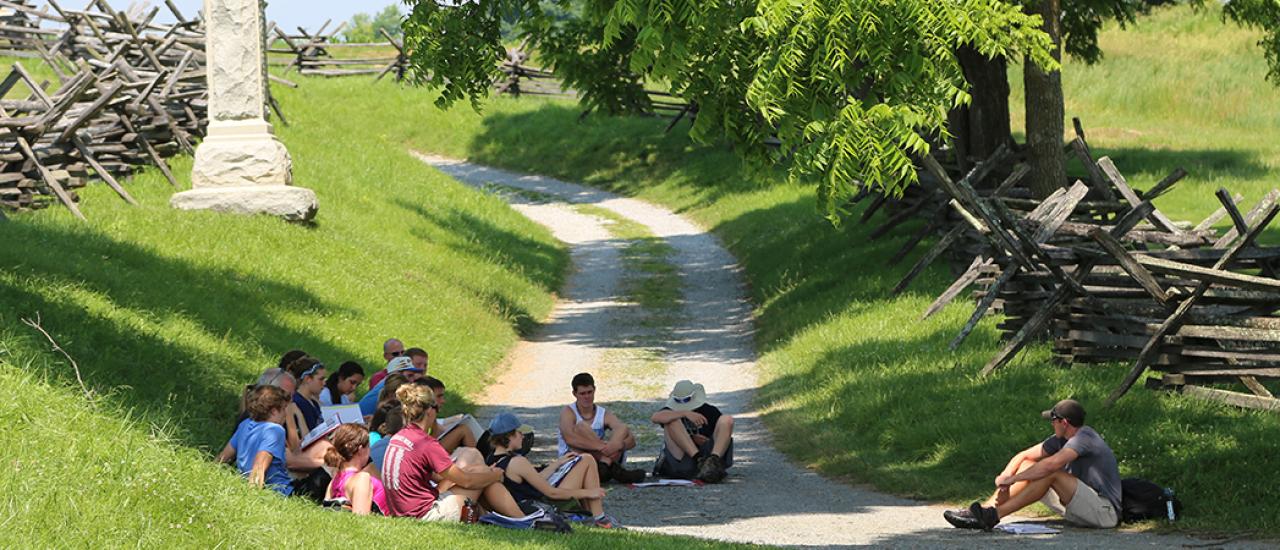
Itineraries
Our itineraries help plan your visit, provide tips and recommend related historic sites and key resources. Itineraries are geared for first-time visitors and include options for short and long visits.
Explore Itineraries by Location
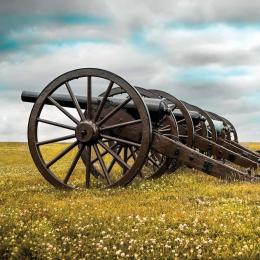
Widely considered to be one of the most beautiful, pristine and well-preserved Civil War battlefields, Antietam is a must-see for any Civil War enthusiast.
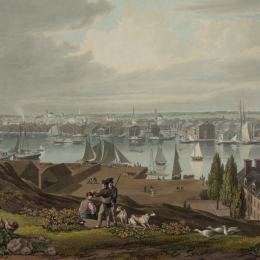
Learn more about Maryland's "Charm City" and the defining moment in the War of 1812 that occurred here.
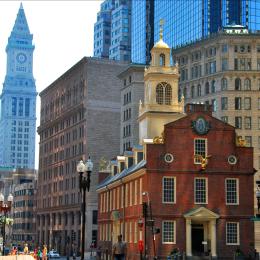
The powder keg that exploded into a rebellion, Boston perhaps has more historic sites closely associated with the American Revolution than any other city in America.

Explore the Brandywine Battlefield – site of the largest single-day battle of the Revolutionary War where George Washington clashed against British General William Howe – and more!
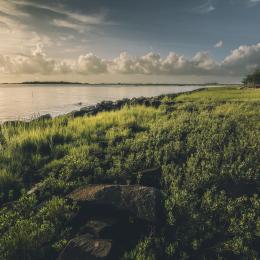
Established in 1670, Charleston, South Carolina, is city rich with Revolutionary War and Civil War history. Visitors to the city can walk in the footsteps of heroes of the Revolutionary War and Civil War at places like Fort Moultrie and Fort Sumter.

Located at the foot of Lookout Mountain in northwest Georgia and southeast Tennessee, Chickamauga and Chattanooga National Military Park preserves several battlefield spaces surrounded by residential and commercial development.

Culpeper County offers wonderful food, shopping and beautiful battlefields such as Brandy Station and Cedar Mountain.
Your Adirondack adventure can always be enhanced with a little 18th-century history, especially when you consider the fascinating Fort Ticonderoga.
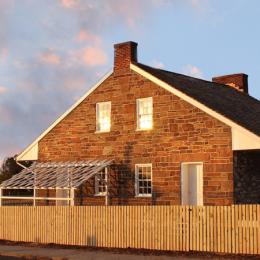
Gettysburg is home to home to one of the most important and iconic battles of the Civil War and one of the greatest speeches of all time.
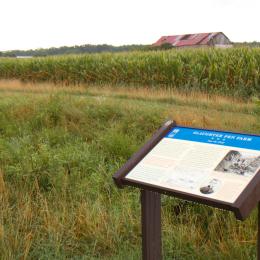
The historic town of Fredericksburg with its surrounding battlefields remains a must-see for all visitors interested in history and the Civil War.
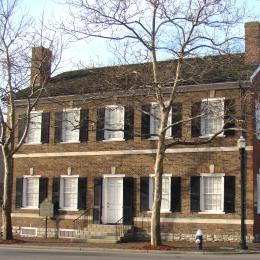
For a day trip a long weekend or for a full week, Lexington, Kentucky, means wonderful shopping, horses, bourbon, great food and American history.
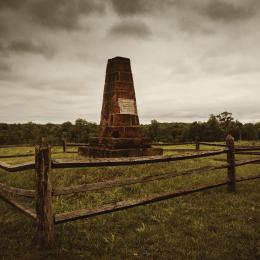
Manassas' Bull Run (First Manassas) and nearby Second Manassas are remarkable historical sites that should appeal to all. Spend a day or weekend exploring!

Monmouth County, New Jersey means the Jersey Shore, wonderful food, shopping, and, of course, Revolutionary War history
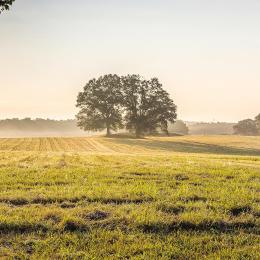
Few areas in the Eastern Theater of the Civil War that witnessed more fighting than did the area surrounding the cities of Richmond and Petersburg.
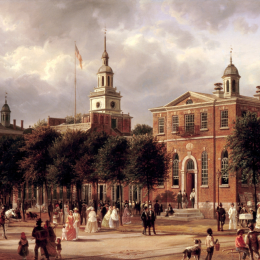
Philadelphia and Independence National Historical Park are a top travel destination for Revolutionary War history. Make the most of your trip to the "City of Brotherly Love."

For a day trip, a long weekend or more, Sackets Harbor is a great destination for a trip full of history, nature and outdoor adventures.
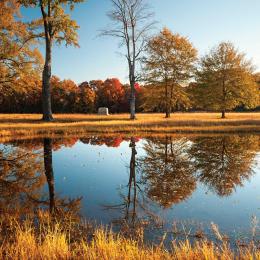
Spend your day exploring the many sights of the pristine Shiloh National Military Park – site of the first great bloodletting of the Civil War.

From French colonial history to Lewis and Clark to the Civil War and beyond, the "Gateway City" has a plethora of historic sites and museums that tell its unique story.
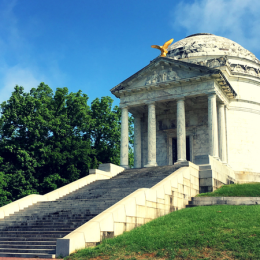
Vicksburg was the culmination of one of the most brilliant military campaigns of the entire Civil War. Explore Vicksburg National Military Park and its vicinity.
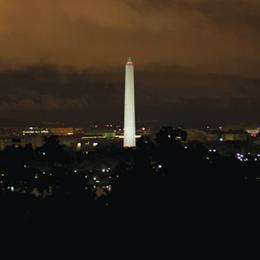
Washington, D.C. is one the most popular travel destinations in the United States. Make the most of your time in our nation’s capital with of itineraries.

Tour Revolutionary Boston in One Day
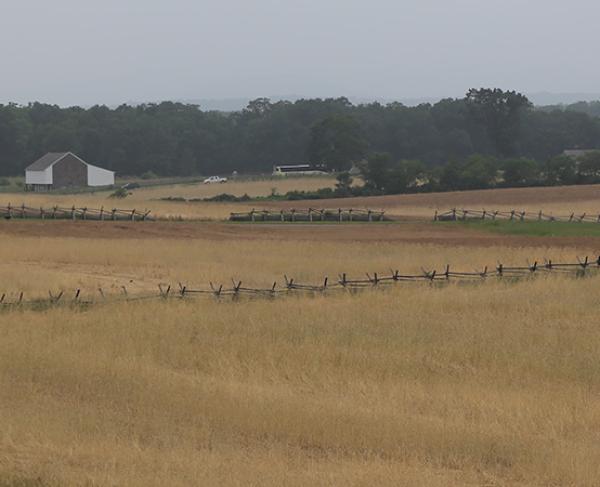
Tour Gettysburg Battlefield in One Day
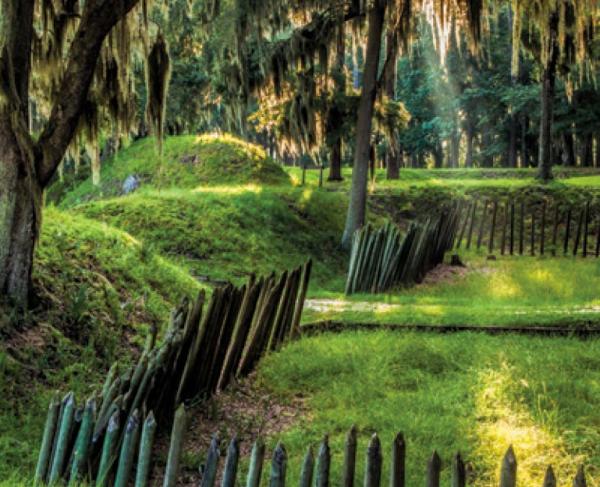
Tour Civil War Savannah in One Day
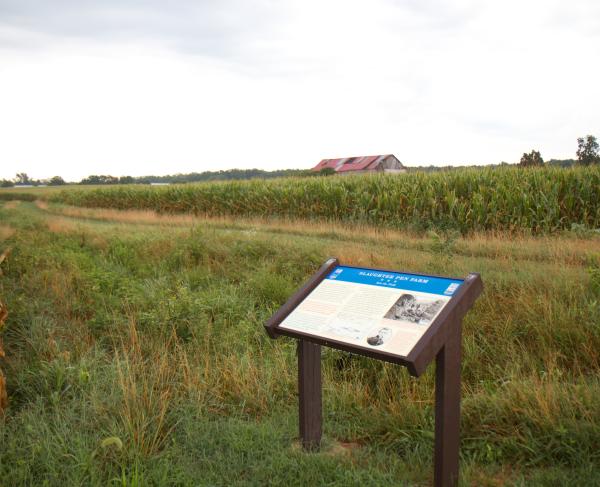
Tour American Battlefield Trust-Preserved Battlefields in Three Days
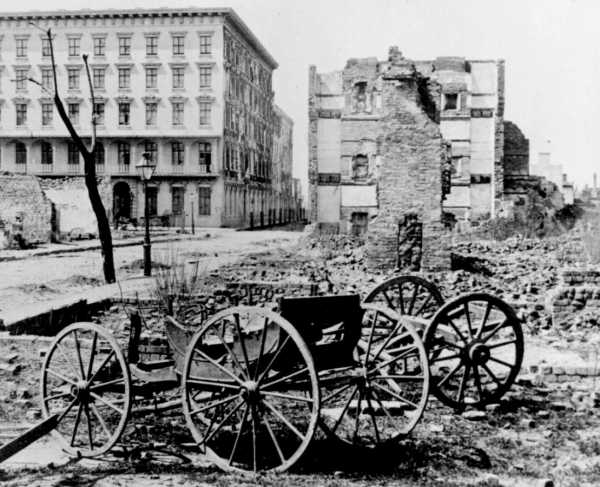
Tour Civil War Charleston in One Day
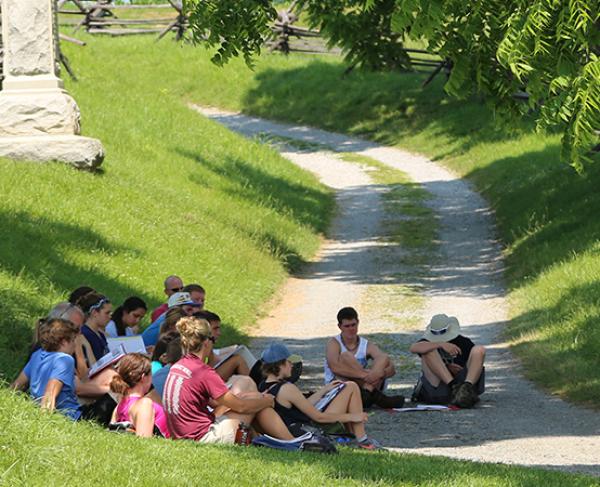
Tour the Antietam Battlefield in One Day
Things to do in Tennessee
The 11 best Civil War Sites to Visit in Tennessee
April 2, 2021
brandonscurrey
There’s no doubt that Volunteer State is one of the most historically rich states in the US, and the majority of this history is invested in the Civil War.
Having witnessed countless wars, the land now holds spine-chilling and beautiful stories of the past. Want to get a taste of these stories firsthand? Then keep scrolling! For we’ve added the top 11 best Civil War sites, you totally need to check out!
The Top 11 Best Civil War Sites To Visit in Tennessee
Are you ready to visualize these fascinating civil war sites in Tennessee with us? Let’s jump right in!
- Shiloh National Military Park- Shiloh, Tennessee
Situated in Jackson, the west of Tennessee, this 4,000-acre military park is the largest battle in the Civil War’s Mississippi Valley Campaign, Shiloh, and what it cost both sides.
At least 109,784 men were a part of this terrible fight starting from April 6 and 7, 1862. Here 23,746 of all men were either killed, injured, or never found as the battle came to an end with the Union winning. This battlefield triggered another struggle in Corinth, which was a bustling railroad junction for the South. Another battle took place, leading to what we see today.
Today the park preserves and presents both Shiloh and Corinth battlefields alongside the Corinth Civil War Interpretive Center and self-guided auto tours. Moreover, you can see impressive sites like the Shiloh National Cemetery, park films like ‘Fiery Trial,’ and even the Indian Mounds Site.
- Chickamauga And Chattanooga National Military Park- Georgia, Tennessee
Are you someone who prefers to watch theater? Then, the Chickamauga and Chattanooga National Military Park is the way to go!
This park commemorates the South’s last major victory occurring in September of 1863. In November of the same year, the Union forces had grown more powerful and were in control of the whole 9,000 acres that is Chattanooga.
Present-day, you can climb the vast heights of Lookout Mountain to see miles and miles of land, bearing the testimony of both the armies during the campaign for Chattanooga.
Not only this, but you can enjoy the interpretation of this epic campaign through the Chickamauga Battlefield Visitor Centre, the Point Park, Moccasin Bend, and Missionary Ridge. Plus, trust us, the beautiful and massive paintings were done by James Walkers, portraying the struggles during the war are worth the visit!
- Lotz House Civil War Museum- Franklin, Tennessee
Present exactly in the middle of Tennessee in Franklin, south of Nashville, the Lotz House Civil War Museum is another must-visit place.
This museum honors the vast area where the 1864 Battle of Franklin took place. During this, the Lotz family became partners with the Carter’s, resulting in one of the most devastating Civil War battles.
The house was built in 1858, found from the US National Register of Historic Places. Today, if you visit the house, you easily spot places where cannonballs tore through from and the bloodstains of injured soldiers when it served as a field hospital.
If you’re someone who particularly enjoys historical landmarks, you need to go here!
- Dickson- Williams Mansion- Greenville, Tennessee
Placed in Greenville, Tennessee, this Federal-style mansion offers a fascinating story about a family.
What’s that? Here lived a daughter married to a former US congressman. Her two sons were Confederate soldiers, while the third was a Union soldier. Constructed in 1821, this house was a bone of contention between both parties during the Civil War.
Learn more about the Dickson-Williams Mansion by visiting it personally!
- Historic Travellers Rest Plantation And Museum- Nashville, Tennessee
Historic Travellers Rest Plantation And Museum is the oldest house museum open to the general public in Nashville!
Built back in 1799, the plantation served both parties. First, it stood strong on the ground as Union troops camped on the property. Later, it acted as the Confederate headquarters to General John Bell Hood two weeks before the Battle of Nashvillebroke out.
What’s more? John Overton, the owner of Travellers Rest, fled away when a bounty of $5,000 was placed on him due to his refusal to swear an oath to the Union. Later in 1862, he returned with the Confederates’ arrival at Travellers Rest.
Visit the Historic Travellers Rest Plantation And Museum to trace both parties’ steps and learn the history of the building itself!
- Fort Pillow State Historic Site- Henning, Tennessee
Originally built back in 1861 by Confederate troops and named after the General Gideon J.Pillow of Maury County, this fort is present on Tennessee’s western edge.
Rich in historical and archaeological significance, the steep bluffs of this site overlook the magnificent Mississippi River. Due to this, it was a strategic location during the Civil War.
However, in 1862, this place was abandoned because of the Union Navy’s advancement. Later in 1971, this became a state park and is famous because of its reconstructed inner fort.
That’s not all! The park even showcases Civil War artifacts like a cannon, interpretive displays, a 12-minute video on the 1864 battle, and tours. So, what are you waiting for? Browse the area where confederate troops used to walk.
- Mabry-Hazen House- Knoxville, Tennessee
Another house rich with Civil War history, namely Mabry-Hazen House, is also part of the US National Register of Historic Places.
In the year 1858, a beautiful mansion was constructed in the city of Knoxville, Tennessee, housing one family for three generations before Civil War broke out. Not only was the house brilliantly designed, but it also offered a captivating sight of Tennessee’s Great Smoky Mountains and Tennessee River.
It was under the administration of both the armies, which means you can find a wide collection of authentic artifacts as part of the exhibit. Take a tour from Monday to Friday (11:00 a.m.-5:00 p.m.) or on Saturday at 3:00 p.m.
- Carnton Plantation- Franklin, Tennessee
We all know that the Battle of Franklin was one of the deadliest Civil Wars recorded in history.
On November 30, 1864, this Battle moved across the fields south of town, taking along with them the lives of thousands. The private home built here after dealing with the savagery of the Civil War became a battlefield.
Here about 9,500 soldiers were killed, wounded, captured, or missing. Even today, you can see the scars of the battle on the second floor. We totally recommend you take the time out of your visiting schedule to head over to Carnton Plantation.
- Stones River National Battlefield- Murfreesboro
There’s no way your list would be complete without the Stones River National Battlefield.
Set along the Stones River in Tennessee’s center, the Stones River National Battlefield commemorates the 3,000 dead and 16,000 wounded men from the battle.
This 570 acres of land allows you to gain a first-person experience of the battles. Here at the Stones River National Battlefield, you can enjoy an insightful film about the battle or browse in the bookstore.
Established in 1927, the park now features about seven miles of trails located throughout the park matched with signs and cannons, giving the visitors a glimpse of the mast. Moreover, you can visit the Stones River National Cemetery to see the estimated 6,100 buried Union soldiers or cycle on the Murfreesboro Greenway System. Pretty cool, right?
- Fort Granger- Franklin, Tennessee
Built back in 1862, Fort Granger used to be an artillery position during the Civil War. It is known as Franklin City Park, open to the public to offer them a real taste of the Civil War bases.
This historical destination is in the middle of Tennessee and still contains all the trenches that Civil War soldiers dug up. The 20 acres of land was a major part of the Battle of Franklin. Furthermore, it was included in the National Register of Historic Places in 1973.
If you really want to enjoy visiting Civil War sites, Fort Granger should be somewhere on the top of your list. The unique scenery offered here is sure to leave you awed!
- Tennessee Civil War National Heritage Area- Middle Tennessee
Another absolute must-visit is the Tennessee Civil War National Heritage Area. This amazing and fascinating site allows you to get a sneak peek at the history and nostalgia.
Here in central Tennessee, Murfreesboro, you learn a lot more about the ‘whole story of America’s greatest challenges.’The best part? When you visit the Tennessee Civil War National Heritage Area, you can go over to the Civil War Sesquicentennial, the Tennessee Civil War Trails, and The Tennessee River Corridor.
Are you making a list? Make sure to write this down for an unforgettable experience!
Ukraine war latest: Putin 'to hold talks with Xi Jinping and Erdogan'; attempt to 'overthrow Ukraine government' foiled
Vladimir Putin will hold meetings with Xi Jinping and Recep Tayyip Erdogan in Kazakhstan, Russian state news agency reports. Meanwhile, Hungary's prime minister is in Kyiv for the first time since Russia's invasion. Listen to a Daily podcast on Kim and Putin as you scroll.
Tuesday 2 July 2024 19:50, UK
- Putin's closest EU ally asks Zelenskyy to consider 'quick ceasefire'
- Attempt to 'overthrow Ukraine government' foiled
- Putin 'to hold talks with Xi Jinping and Erdogan'
- Exclusive : The critical cog in Putin's machine and how British firms help to keep Russian gas flowing
- Big picture: What you need to know this week
- Your questions answered: Has the West been honest about Ukraine's failures? | Is Kyiv next?
- Listen to the Daily above and tap here to follow wherever you get your podcasts
- Live reporting by Bhvishya Patel and (earlier) Mark Wyatt
US secretary of state Antony Blinken and the Ukrainian president's chief of staff, Andriy Yermak have discussed NATO members' intention to bring Ukraine closer to the alliance.
Mr Blinken has said Ukraine will become a member of NATO and that the summit will "help build a bridge" to that outcome, state department deputy spokesperson Vedant Patel said.
"They spoke about a number of issues, including the upcoming Washington NATO Summit and allies' intention to bring Ukraine closer to NATO membership and helping to strengthen Ukraine's ability to defend against Russian aggression," Mr Patel told reporters.
Their meeting in Washington comes before a NATO summit in the US capital next week, at which Ukraine hopes to secure more assurances from the alliance on its membership bid.
Apartment buildings have been left destroyed in the rural settlement of Toshkivka, in the eastern Luhansk region, amid fierce fighting in the region.
Luhansk - along with the Donetsk area - forms part of the Donbas region.
The region is one which Russia is trying to seize.
Lithuania's foreign ministry has made a diplomatic protest to Russia after a Russian civilian aircraft entered its airspace without permission.
The Pobeda airline aircraft entered Lithuanian airspace over the Baltic sea for a minute on Sunday evening, on its way from Moscow Vnukovo airport to Kaliningrad airport, the ministry said.
Lithuania, neighbour to both Russia and its ally Belarus, was once ruled from Moscow but is now a member of NATO and the EU.
The country has shown its backing for Ukraine during the war and provided military support to the country.
Belarus will not allow any clashes on the border with Ukraine, Belarusian President Alexander Lukashenko has said according to the country's state-run Belta news agency.
"I guarantee you that we will not allow any clashes on the border with Ukraine. There won't be any," Mr Lukashenko said.
Last week, Belarus announced that it had deployed additional air defence forces to its border with Ukraine to protect "critical infrastructure facilities" due to increased Ukrainian drone activity in the area.
President Lukashenko, who has been the head of state of Belarus since 1994, is a longstanding ally of Mr Putin.
At the onset of Russia's invasion, Belarus provided logistical support for Russia, with Russian forces entering Ukraine from Belarusian territory.
But Mr Lukashenko has not sent any troops.
Two women have been killed after Russian attacks on the central Ukrainian city of Nikopol.
Regional governor Serhiy Lysak said on Telegram the women were aged 61 and 86.
Another nine people were wounded.
"There is a lot of destruction in the district centre," he said.
"Local housing, educational institutions and a dispensary were damaged. Shops, beauty salons and cars were also affected."
Nikopol has been subjected to aerial attacks since the start of the Russian invasion in February 2022.
Russia denies targeting civilians or civilian infrastructure.
US defence secretary Lloyd Austin has said Washington will soon announce an additional £1.8bn in security assistance for Ukraine.
The package will include anti-tank weapons, interceptors and munitions for Patriot and other air defence systems.
It marks a strong response to pleas from Kyiv for help in battling Russian forces in the eastern Donetsk region.
On Sunday, Volodymyr Zelenskyy said that Russia had dropped more than 800 powerful glide bombs in Ukraine in the last week alone.
He urged national leaders to relax restrictions on the use of Western weapons to strike military targets inside Russia, adding that Ukraine needed the "necessary means to destroy the carriers of these bombs, including Russian combat aircraft, wherever they are".
Vladimir Putin will hold meetings with Chinese President Xi Jinping and Turkish President Recep Tayyip Erdogan tomorrow during a summit of the Shanghai Cooperation Organisation (SCO) in Kazakhstan's capital Astana, Russian state news agency TASS reports.
Mr Putin last met Mr Xi in May when he visited China on his first foreign trip after being inaugurated for a fifth term as Russian president.
The SCO is a Eurasian political, economic, international security and defence organisation established by China and Russia in 2001.
The other full members are India, Iran, Kazakhstan, Kyrgyzstan, Pakistan, Tajikistan and Uzbekistan.
Turkey, though not a member, often takes part in its meetings as a "dialogue partner".
Ukraine is expected to get "good news" in its quest for more air defence systems at a NATO summit in Washington next week, a senior US state department official has said.
The official told Reuters: "We hope we'll be able to get to the summit and make some new announcements on air defence.
"You've heard that the Ukrainians are keen to secure additional Patriots or similar systems. And I think we'll have some additional good news for them on that front."
The official did not provide any further details.
For context : Ukrainian officials have been urging their allies for months to supply more air defence systems to defend against frequent missile and drone attacks from Russian forces.
The upcoming NATO summit in Washington, which will be held from 9-11 July, is intended in part to celebrate the 75th anniversary of the military alliance.
Four settlements in the Russian region of Belgorod have been attacked by Ukrainian drones, the region's governor has said.
Vyacheslav Gladkov, reporting the news on his Telegram channel , said there were no civilian casualties according to preliminary data.
"In the Graivoron urban district, in the city of Graivoron, as a result of a drone crash with subsequent detonation, a parked passenger car caught fire," he wrote.
"Fire crews quickly extinguished the source of the fire. In the village of Bezymeno, five private houses were destroyed after several attacks."
Ukraine carried out a "destructive strike" on a Russian ammunition depot in Crimea yesterday, according to the country's air force commander.
It comes following Russia's claims that they managed to destroy five Ukrainian SU-27 fighter jets today on an airfield in the Poltava region.
Ukraine's air force commander, Mykola Oleshchuk, said on Telegram : "Once again, Ukrainian aircraft 'destroyed' by enemy propaganda continue to successfully perform combat missions."
Mr Oleshchuk did not specify the exact location of the ammunition depot targeted, but posted a video from a local Ukraine-linked Telegram channel allegedly showing the strike on Balaklava, near Sevastopol.
The video's authenticity has not been independently verified by Sky News.
Be the first to get Breaking News
Install the Sky News app for free


IMAGES
COMMENTS
43. Map. Gettysburg is one of the best-known battles from the civil war. From July 1-3, 1863, Union and Confederate troops met in what became the bloodiest battle ever to take place on American soil. Between the two armies, up to 51,000 soldiers were lost over the three days of battle.
Best Civil War Sites. 10. Andersonville Prison. We begin at #10 with the most notorious Confederate prisoner-of-war camp of all- Andersonville! Andersonville, located in the state of Georgia, is the site of the infamous Confederate prisoner-of-war camp.
Perryville, Kentucky. 15/26. Kentucky's location as a buffer between the North and South made the state extremely valuable during the war. At Perryville-located approximately 70 miles southeast of Lousiville -the state's Civil War fate was sealed when Union troops prevailed and kept it under their control.
Don't Miss: Hollywood Cemetery is the final resting place of American presidents (James Monroe and John Tyler) and Civil War luminaries like Jefferson Davis, George Pickett, and J.E.B. Stuart. A ...
The Civil War Trust is proud to have saved more than 900 acres of hallowed ground at numerous key sites at and around Gettysburg, including the site of Lee's Headquarters on Seminary Ridge. Visit: Vicksburg Battlefield, MS ... Stay updated on the American Battlefield Trust's preservation efforts, discover travel insights, learn about upcoming ...
Top 10 U.S. Civil War Sites. These ten places will transport you back to the time of the blue vs. the gray. September 14, 2010. • 10 min read. Fort Sumter National Monument; Charleston, South ...
Today, visitors can explore Chancellorsville Battlefield within the wider remit of the Fredericksburg and Spotsylvania National Military Park. 7. Fort Donelson Battlefield. Fort Donelson Battlefield was the site of a fierce and pivotal battle fought from 11 to 16 February 1862 as part of the American Civil War.
Antietam, Maryland (September 1862) Time has returned Antietam National Battlefield, the site of the bloodiest one-day battle of the Civil War, to its tranquil antebellum appearance, with ...
3. Appomattox County Court. It was in Appomattox, a village in Virginia, that General Robert E. Lee surrendered to Lieutenant General Ulysses S. Grant on 9 April 1865, marking the end of the American Civil War. The meeting took place at the home of Wilmer and Virginia McLean and lasted approximately an hour and a half.
Along with the battlefield, the city is home to Pamplin Historical Park and The National Museum of the Civil War Soldier. 804-732-3531; nps.gov/pete Manassas, Va.
Explore 50 Civil War Battlefields. From 1861 to 1865 great armies fought in a terrible Civil War for competing visions of America. Gettysburg, Antietam, The Wilderness and The Crater are all written in blood in our nation's history. Today the armies are long gone, but sentinels still guard their memory, messages carved in stone for future ...
Among the attractions of these historic sites are the Shiloah National Cemetery, the Confederate Memorial in Shiloah Park, Siloah Indian Mounds and the Sunken Road. 7. Richmond National Battlefield Park -Richmond, Virginia. Richmond, Virginia played an integral part of the Civil War, having served as the capital of the Confederate States of ...
2. Fort Sumter National Monument. The history books will tell you that the American Civil War began at Fort Sumter, when the Confederates first attacked. Now, the Union fort is located within Charleston, South Carolina, a great U.S. southern city to visit regardless of your travel itinerary. Visitors not only walk the walls of the Fort ...
The 75-acre Chattanooga National Cemetery on South Holtzclaw Avenue where 12,800 Civil War soldiers are buried faces Missionary Ridge. Related Resources. Civil War | Itinerary. Tour the Chickamauga Battlefield in One Day. ... discover travel insights, learn about upcoming events, uncover captivating history and more. 58,000 Acres Saved ...
South Carolina. 1. Charleston, SC. Begin your road trip where the war began, in Charleston, SC. It's pretty surprising General Sherman didn't burn Charleston on his famous March to the Sea. The holy city is, after all, where the first Confederate shots were fired at Fort Sumter, a Union fort during the Civil War.
On July 18, 1987, 27 Civil War historians and enthusiasts met at what was at the time Arbuckle's Restaurant and organized a grassroots preservation organization devoted to saving Civil War battlefields by buying the land. They named it the Association for the Preservation of Civil War Sites, which later merged with the American Battlefield Trust.
Fort Sumter National Monument. Where: Charleston, South Carolina. Then: The Confederate's artillery attack of a tiny brick Union-held fort on an equally tiny island in the mouth of Charleston Harbor is most famous as the site of the first shots of the American Civil War. The first shelling took place at 4:30am on 12 April 1861, leading to the ...
Richmond, Virginia —. The American Civil War Center in the former Tredegar Iron Works aims to tell the whole story of the Civil War. Courtesy Richmond Metropolitan CVB. Shiloh, Tennessee ...
Carnton. Carnton is a historic home and museum in Franklin, Williamson County, Tennessee. The large former Confederate field hospital for the Battle of Franklin is located at one of the Civil War battlefields near Nashville, at 1345 Eastern Flank Circle. Its white-columned façade, with lush surroundings, evokes a sense of peace from afar but ...
Visitors to the city can walk in the footsteps of heroes of the Revolutionary War and Civil War at places like Fort Moultrie and Fort Sumter. ... Stay updated on the American Battlefield Trust's preservation efforts, discover travel insights, learn about upcoming events, uncover captivating history and more. 58,000 Acres Saved ...
Shiloh National Military Park- Shiloh, Tennessee. Situated in Jackson, the west of Tennessee, this 4,000-acre military park is the largest battle in the Civil War's Mississippi Valley Campaign, Shiloh, and what it cost both sides. At least 109,784 men were a part of this terrible fight starting from April 6 and 7, 1862.
Gettysburg Campaign. Perhaps the most well-known Civil War battle, The Battle of Gettysburg took place when the Confederate army invaded Pennsylvania in the summer of 1863. While both sides suffered heavy casualties, the Union took the victory - a major turning point durning the war. Gettysburg Campaign Trail encompasses both invasion and ...
43. Map. Gettysburg is one of the best-known battles from the civil war. From July 1-3, 1863, Union and Confederate troops met in what became the bloodiest battle ever to take place on American soil. Between the two armies, up to 51,000 soldiers were lost over the three days of battle.
Welcome back to our coverage of the Ukraine war. Yesterday, a British volunteer medic reportedly involved in saving more than 200 lives on the frontline died in Ukraine. Meanwhile, the US military ...